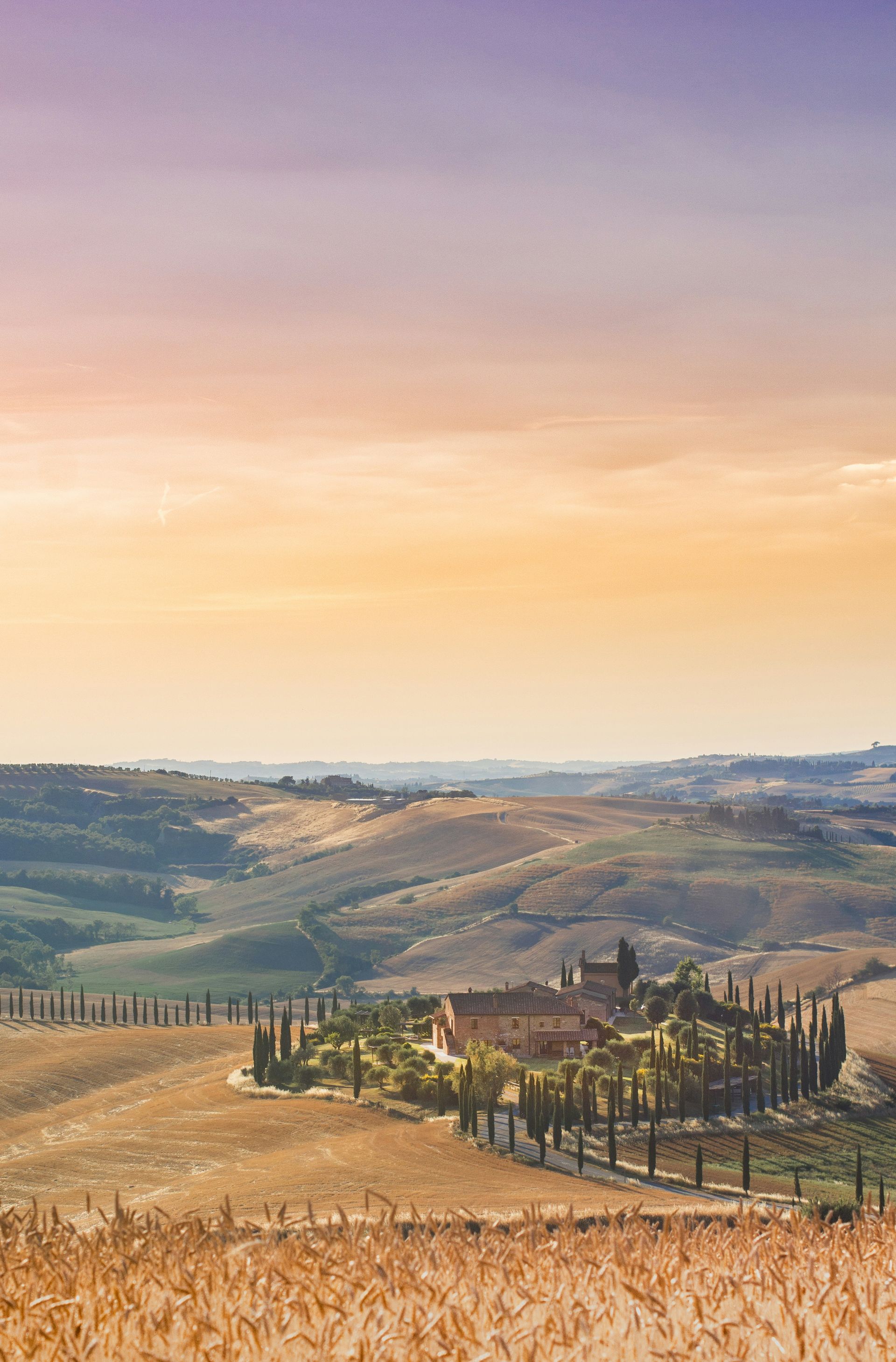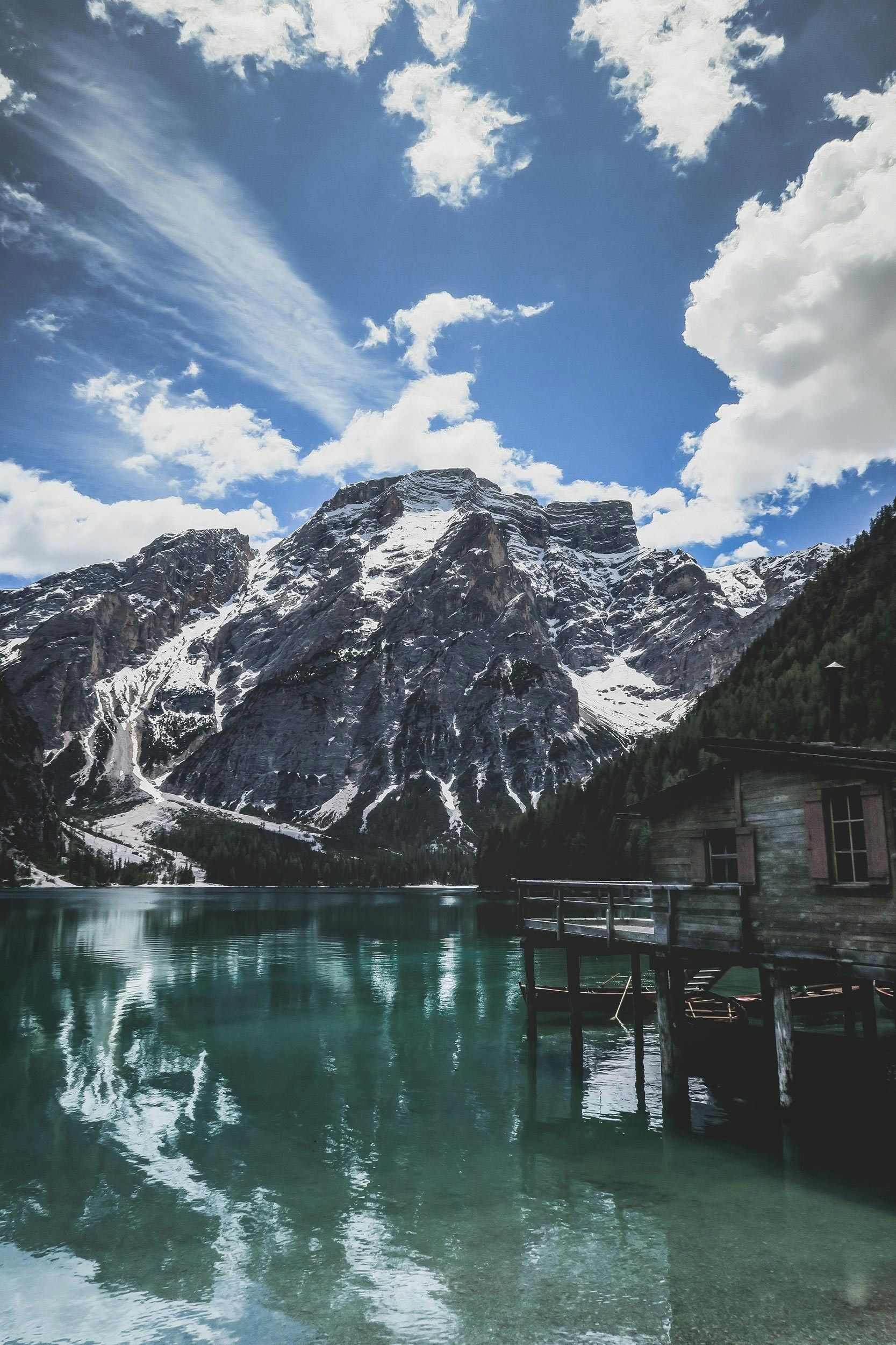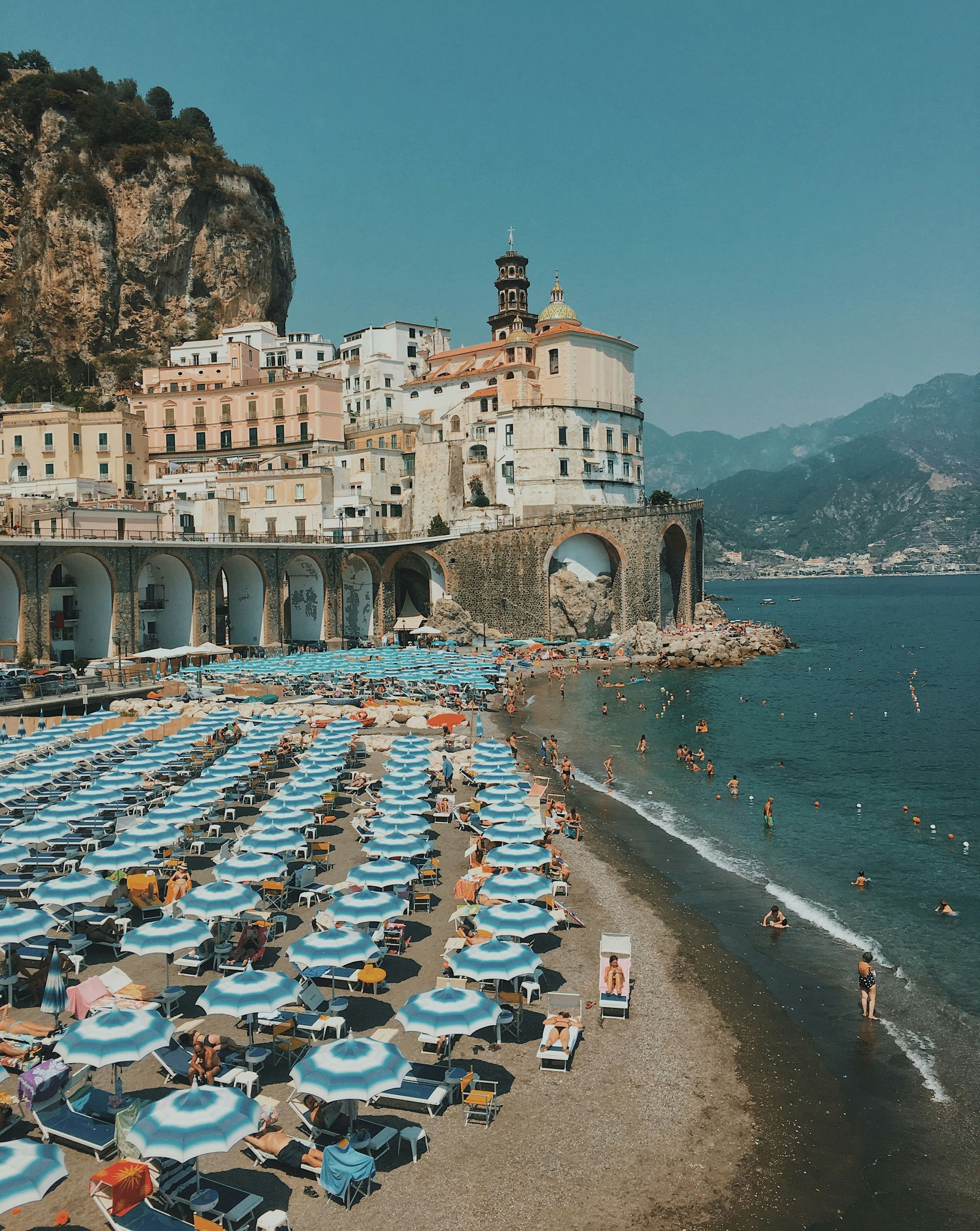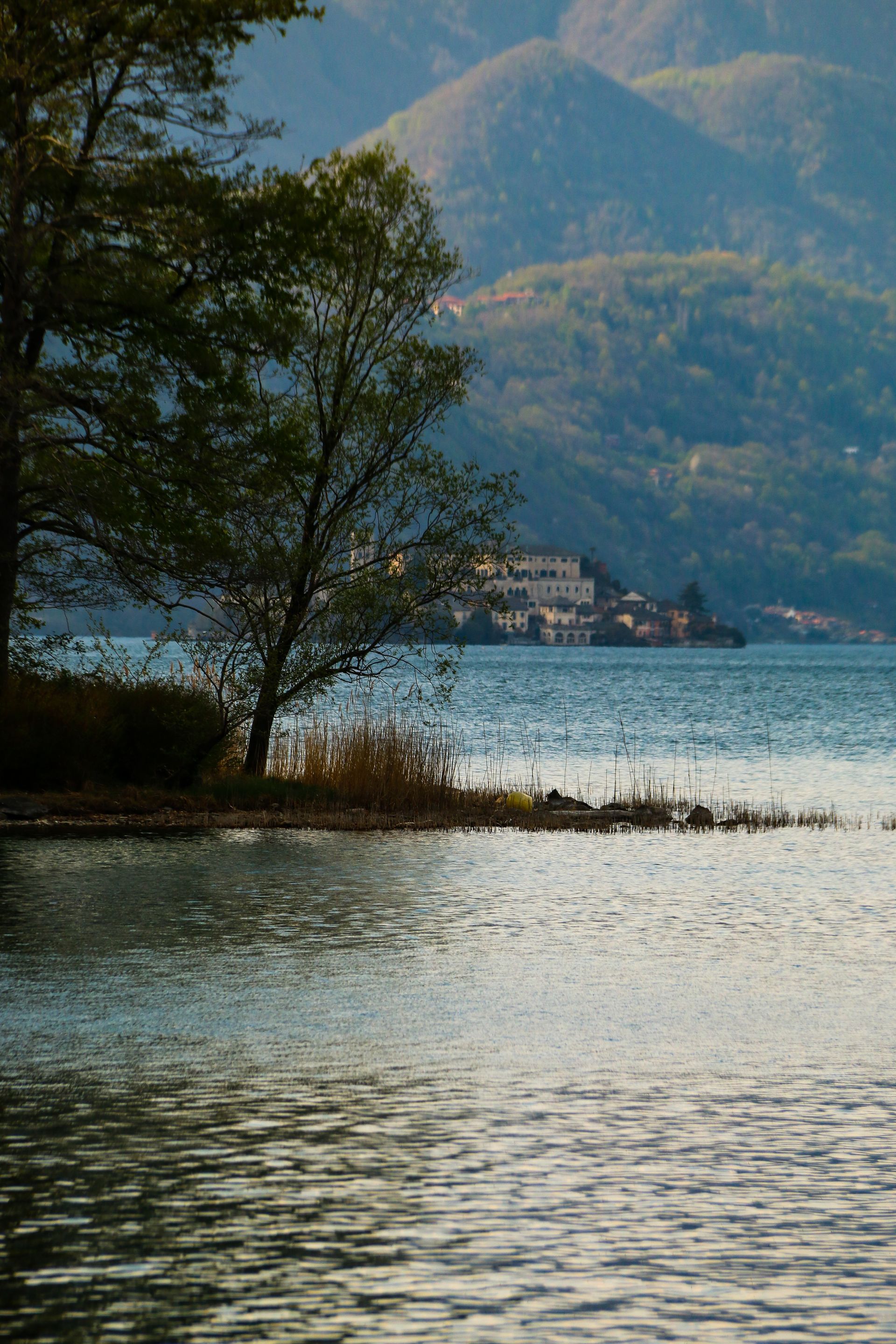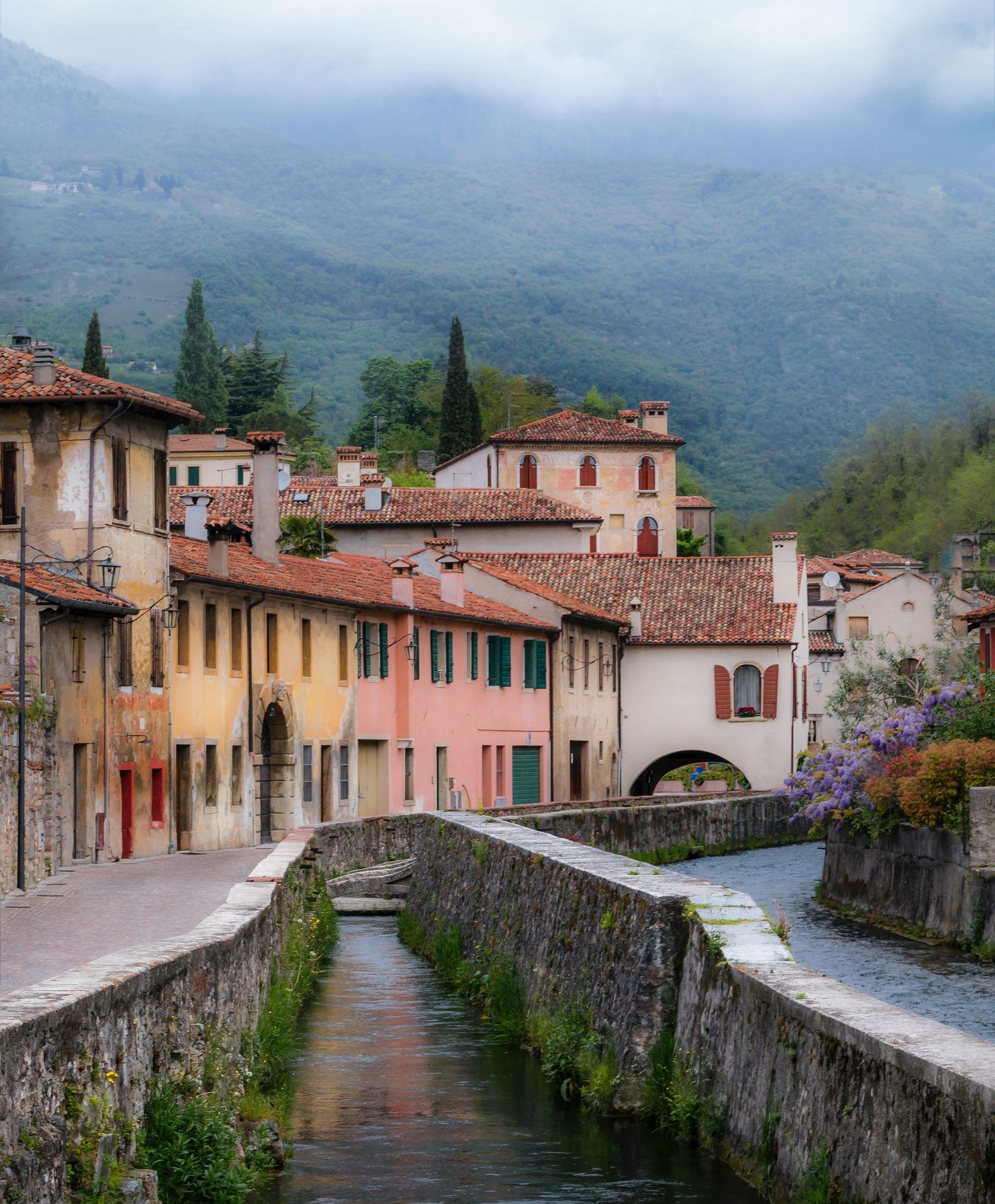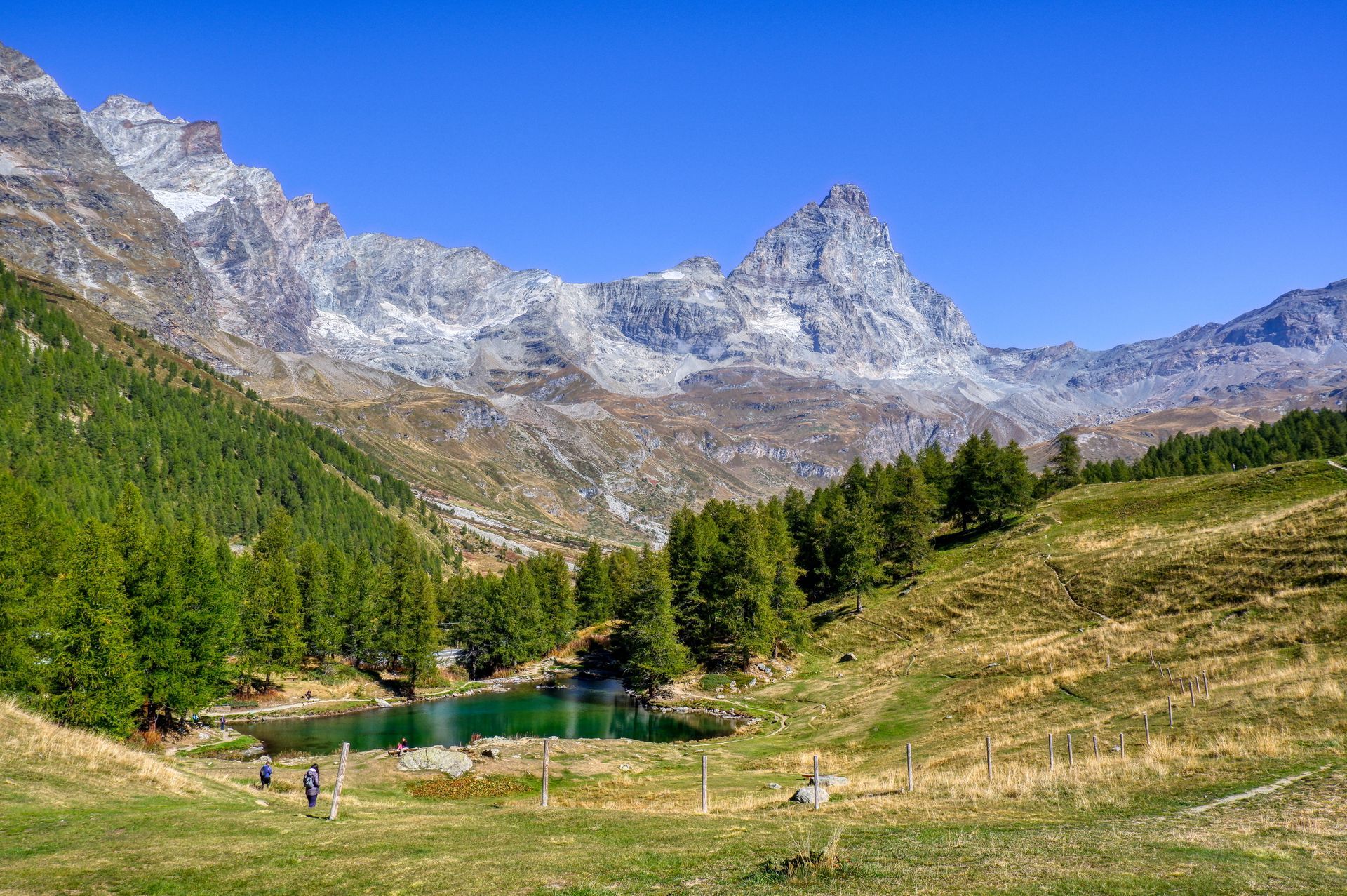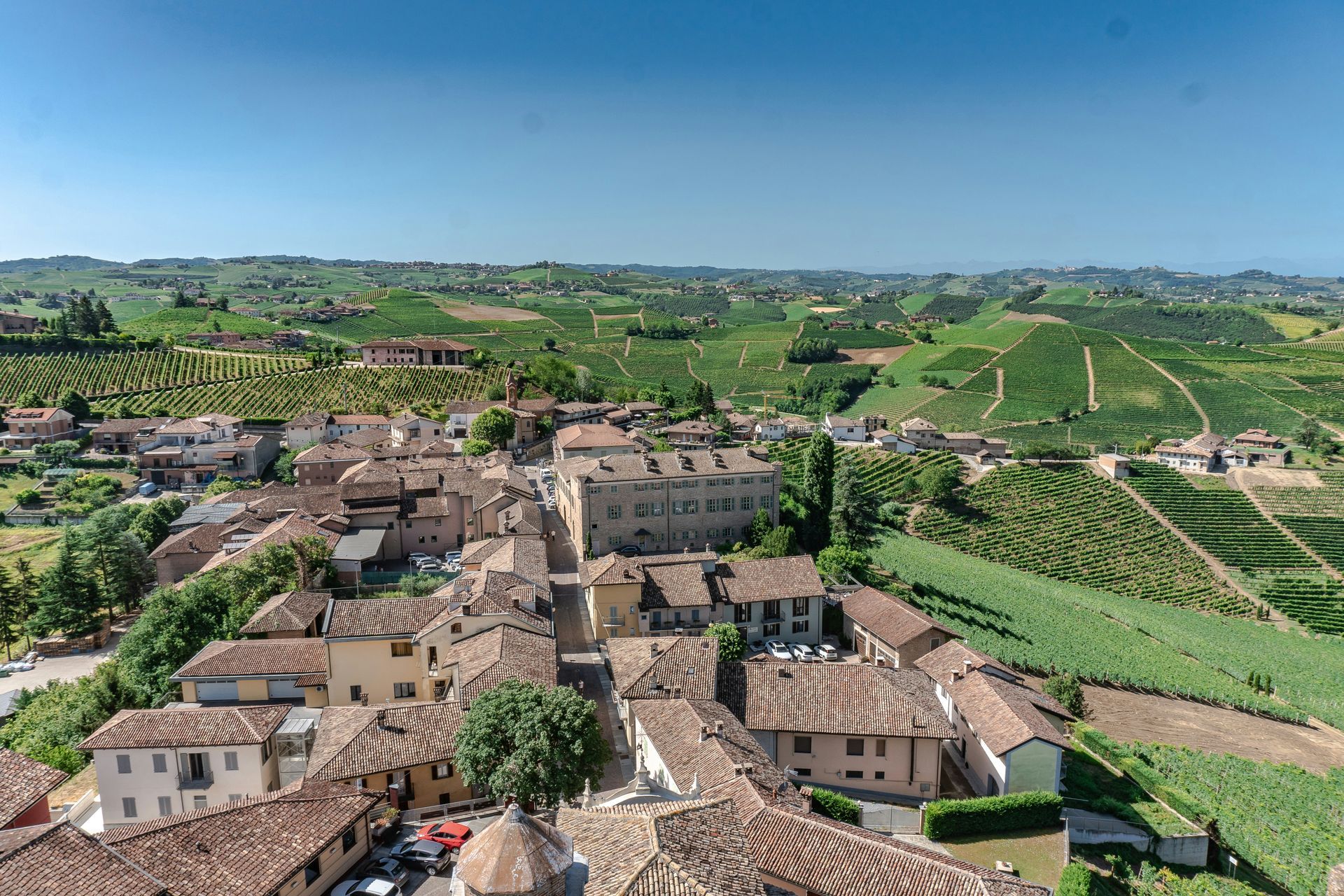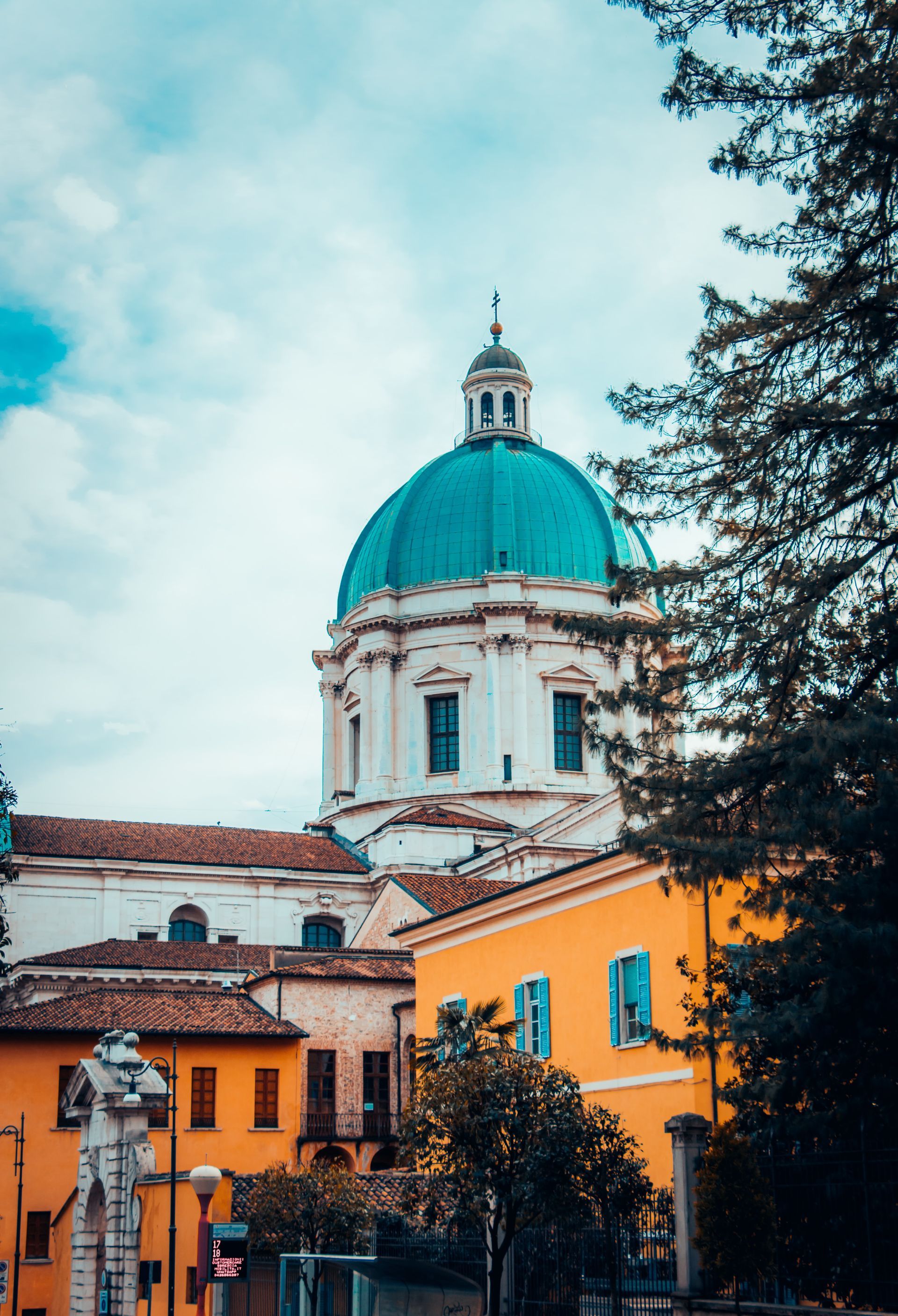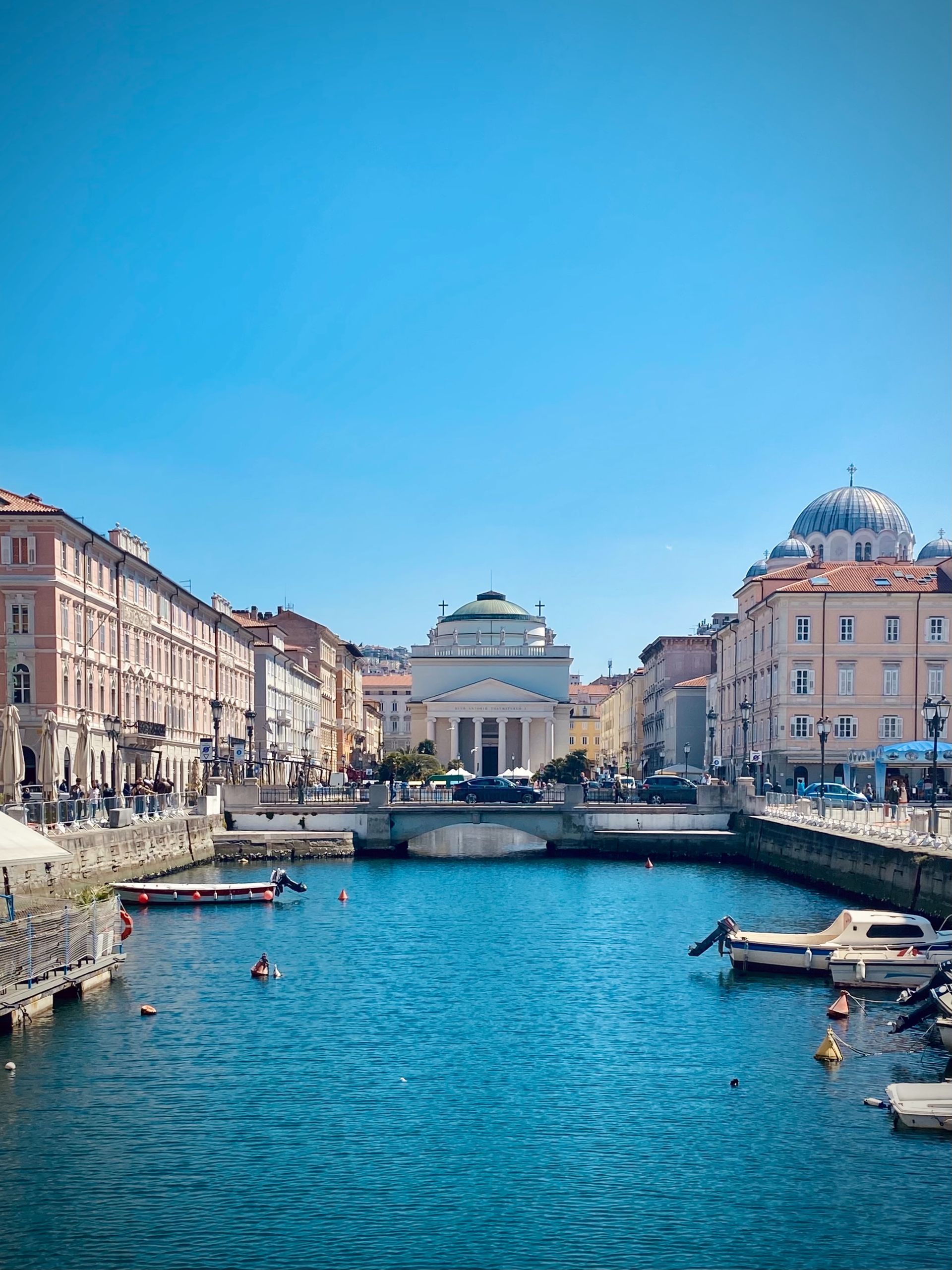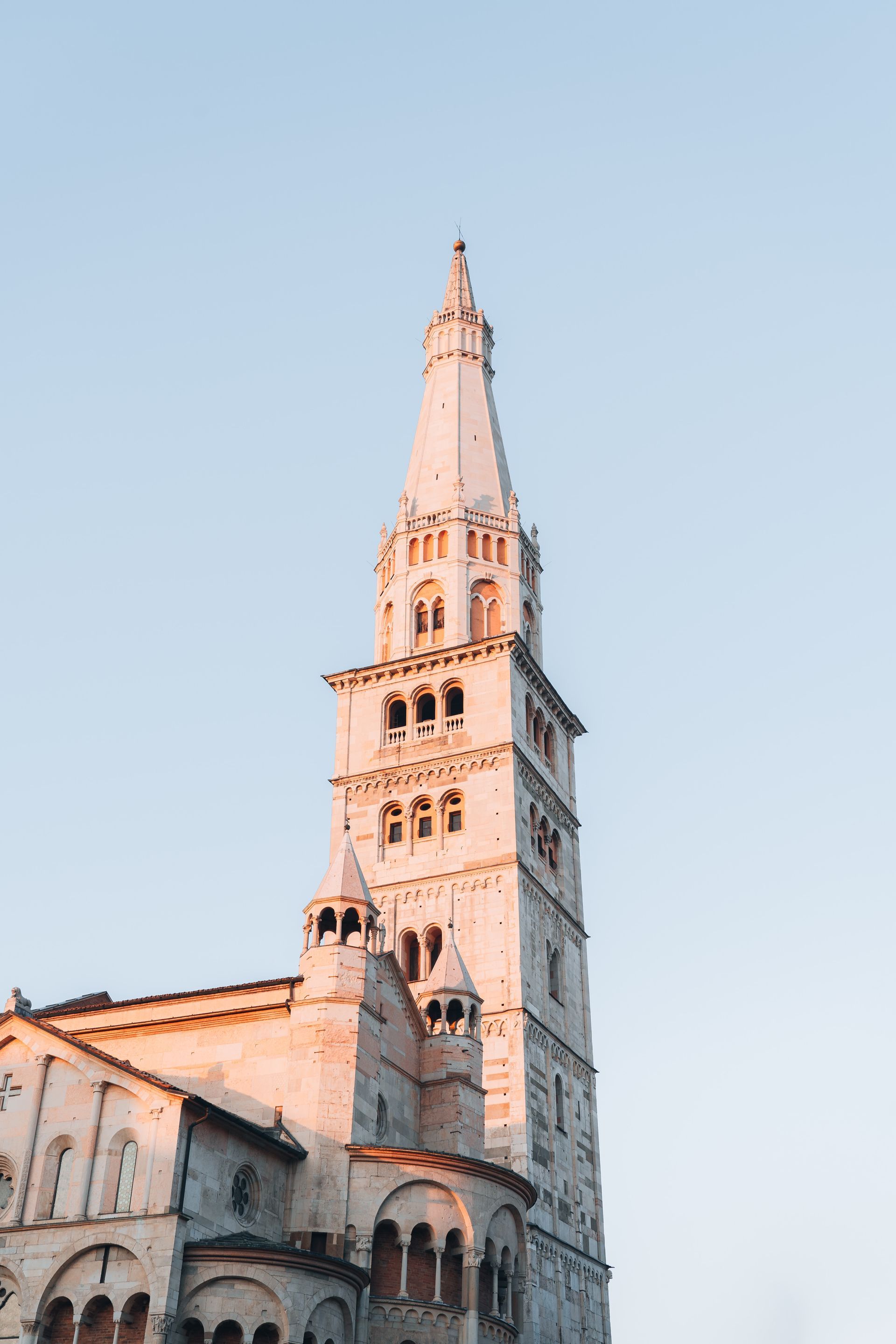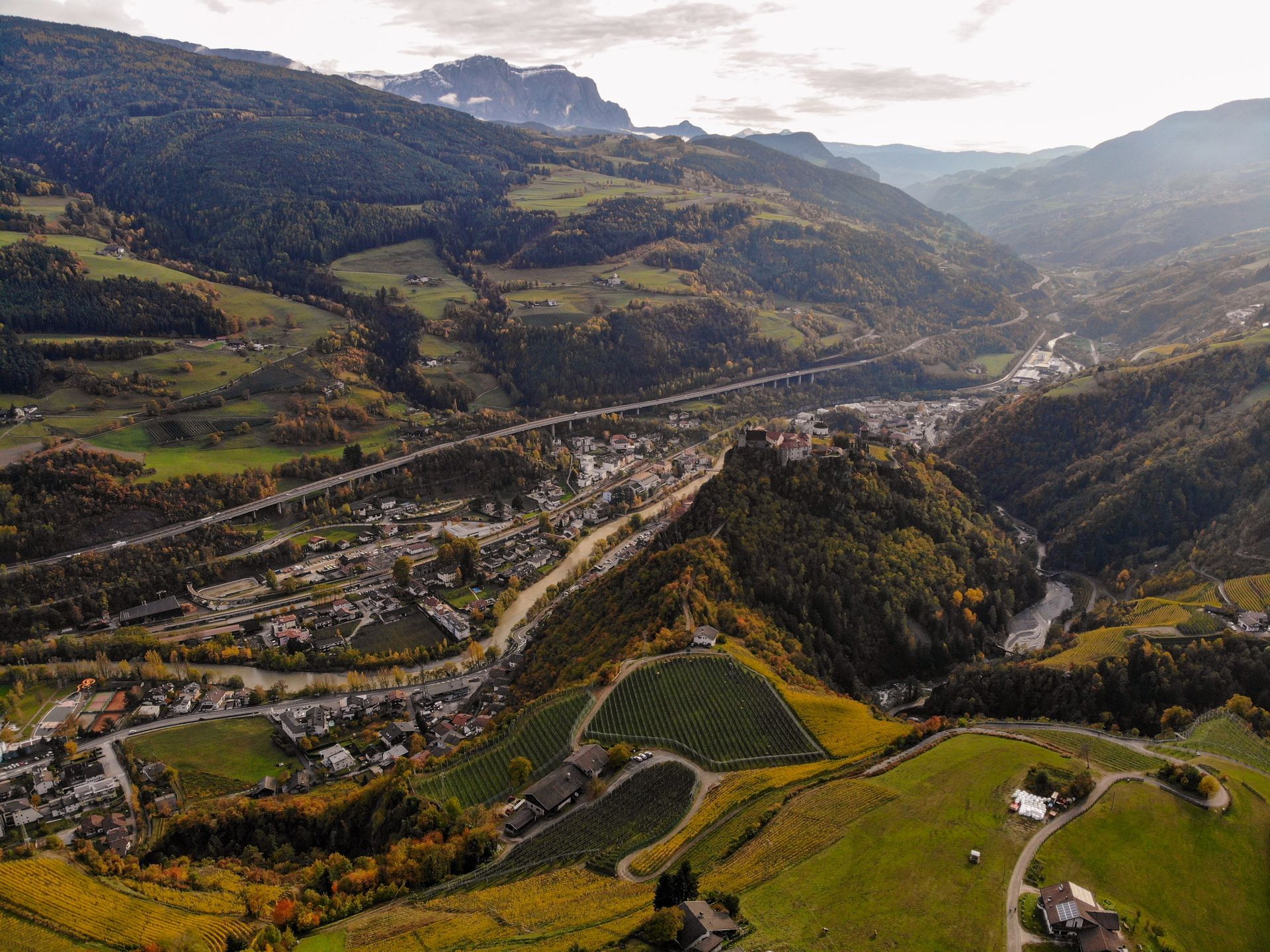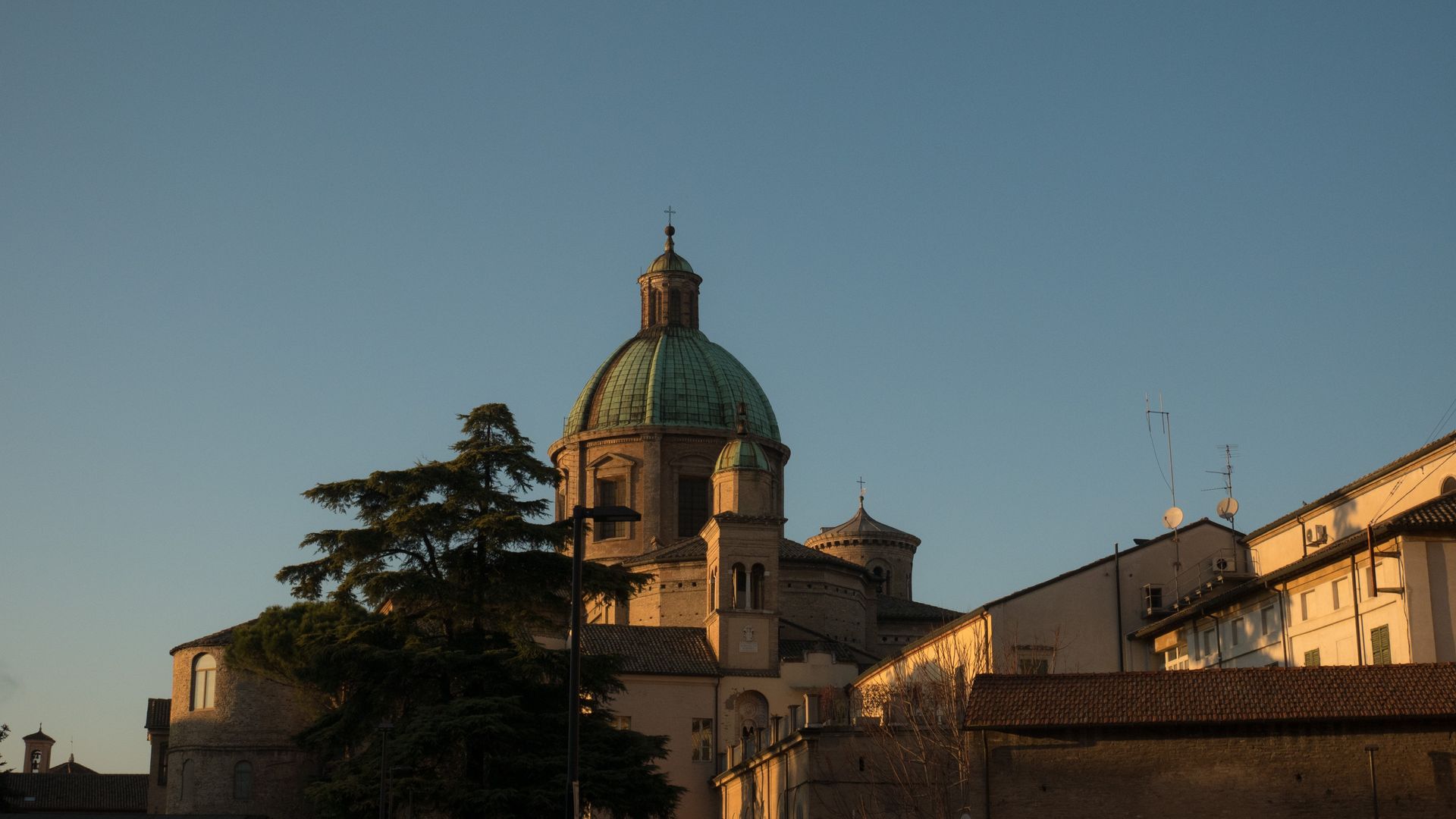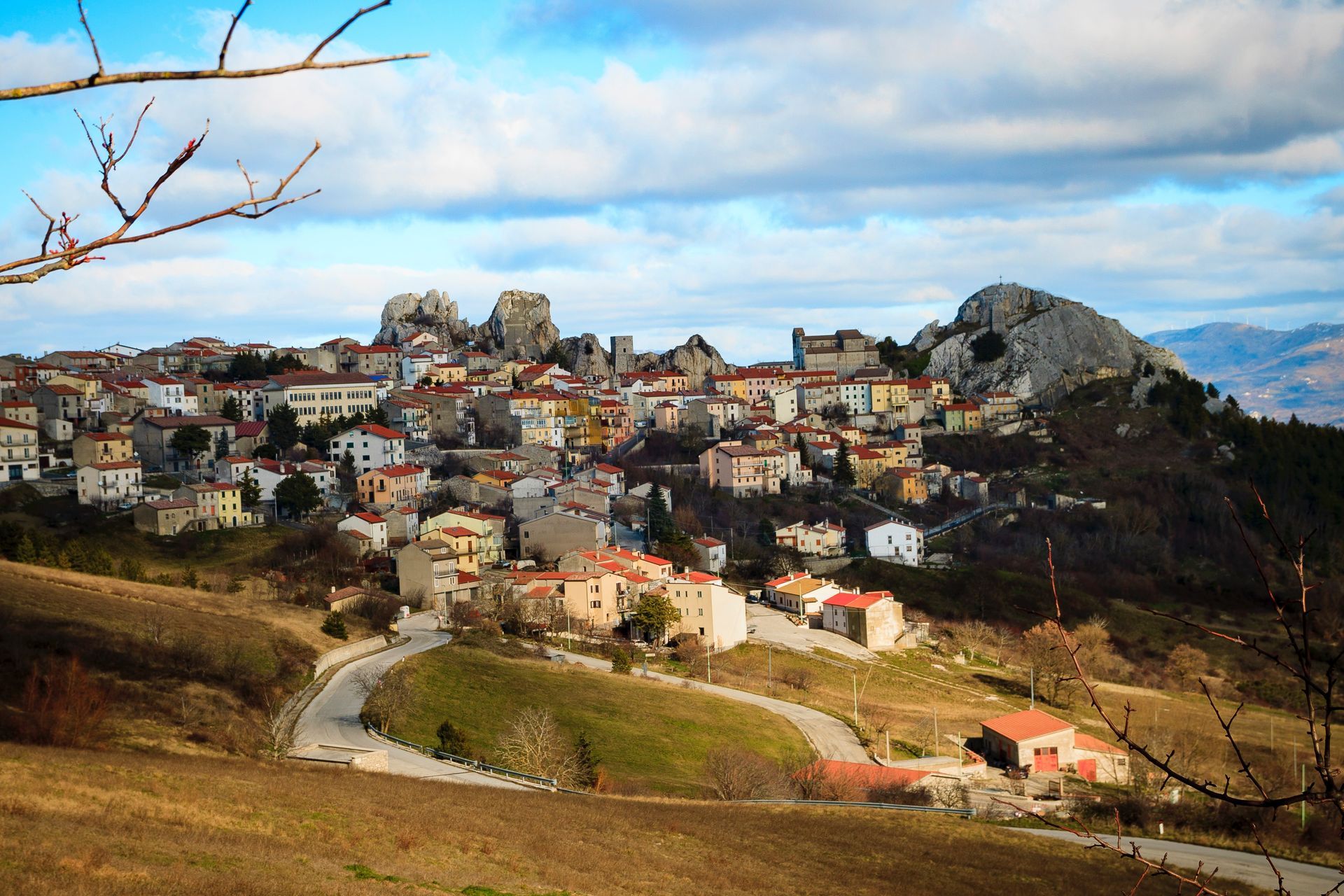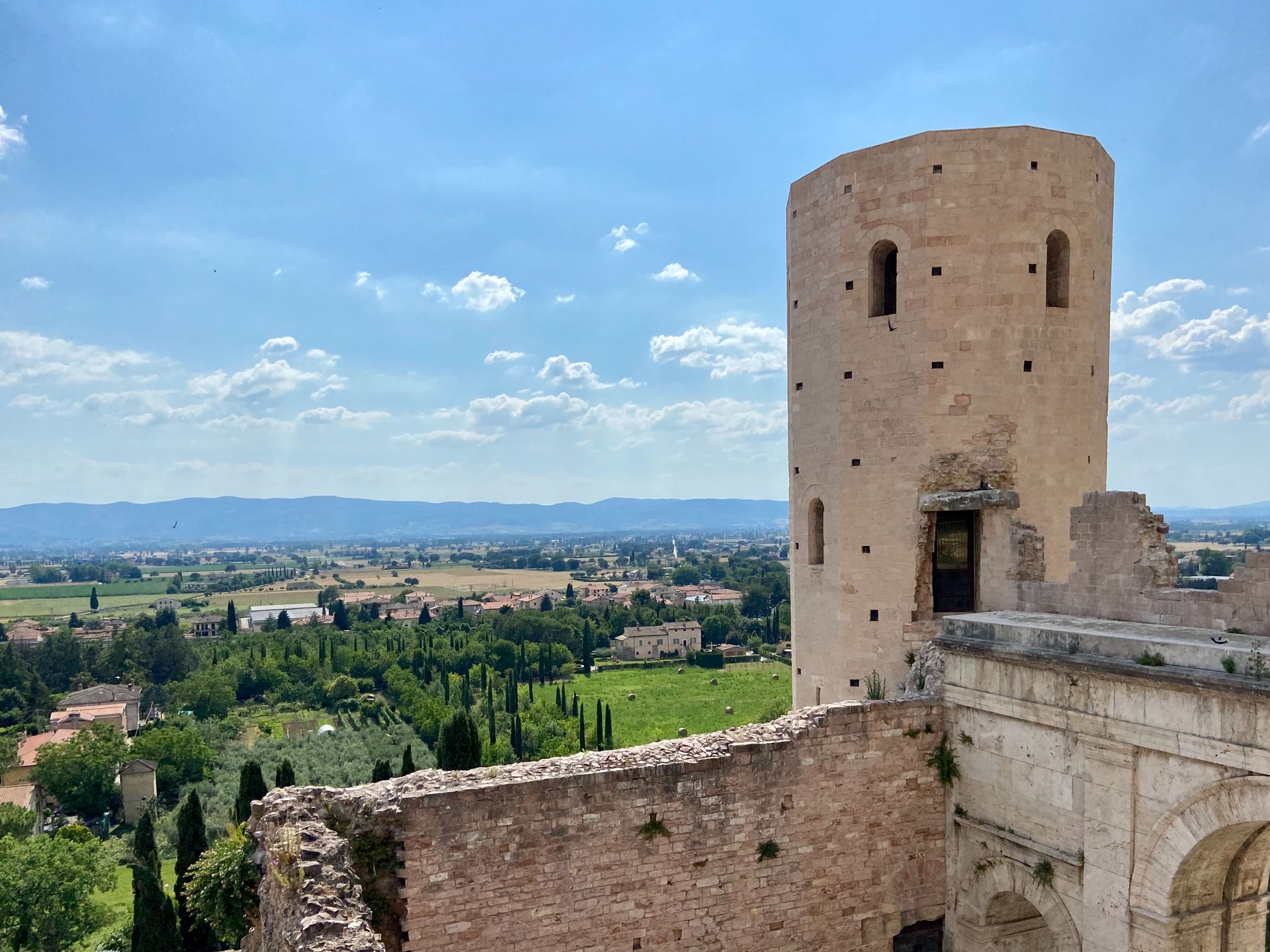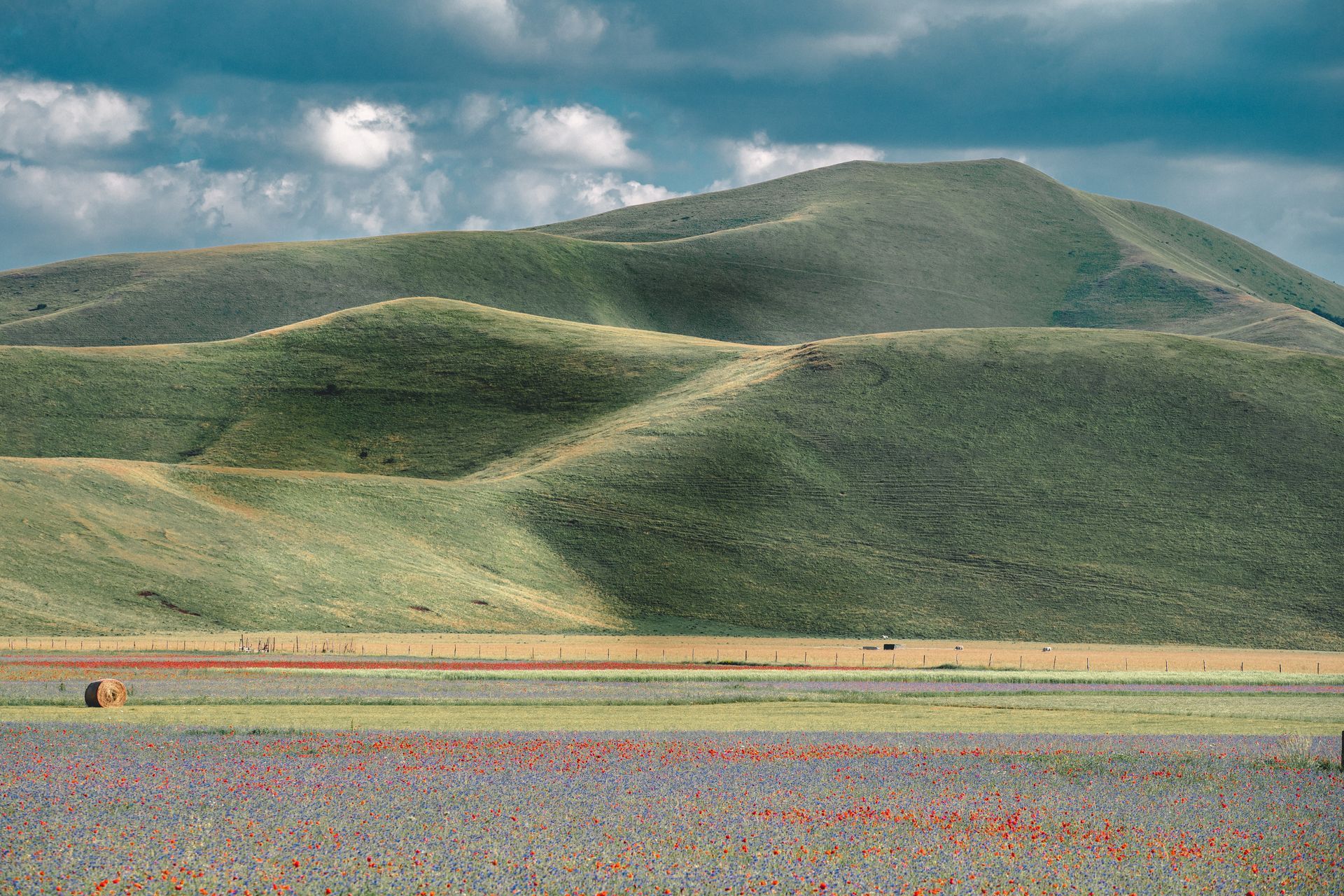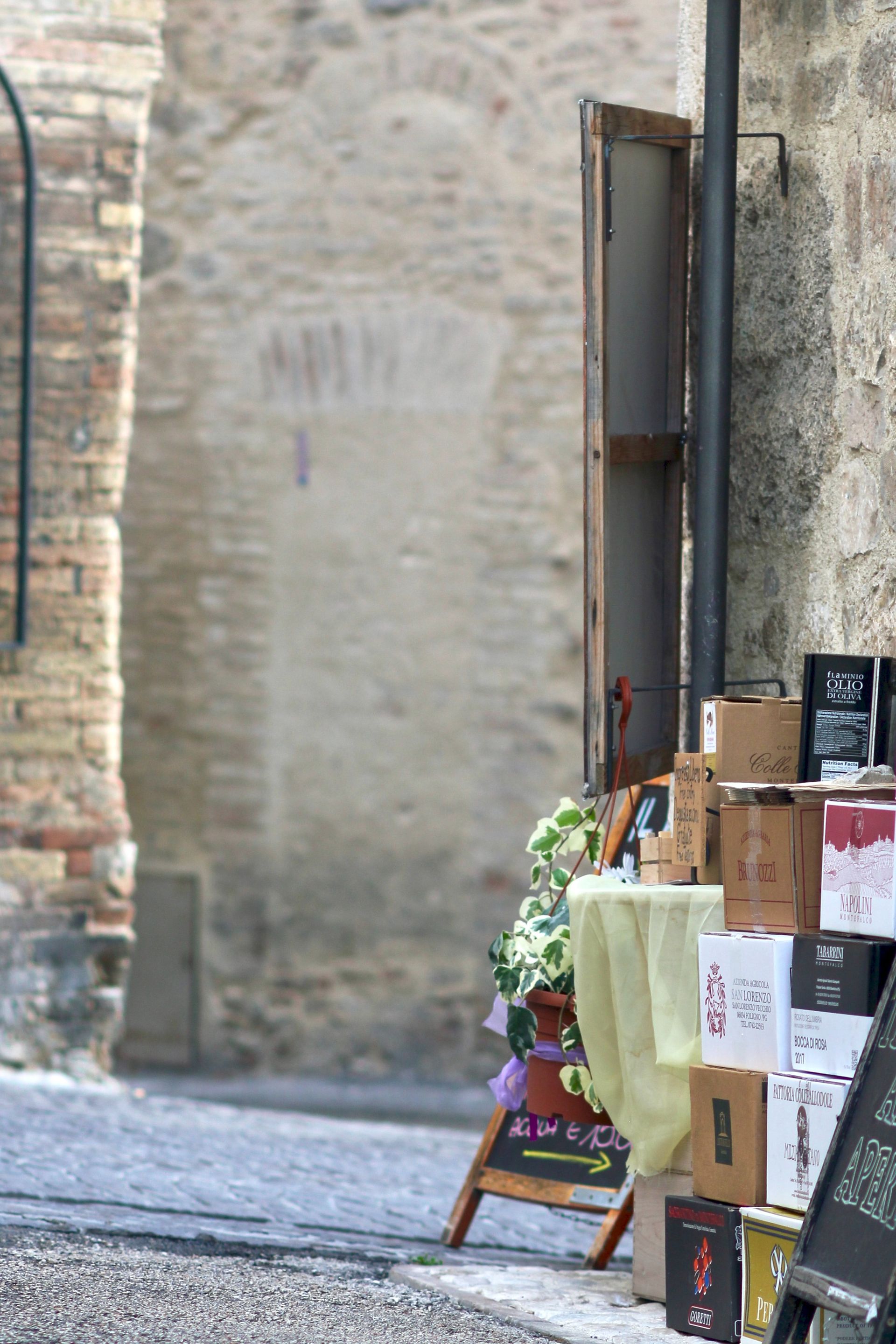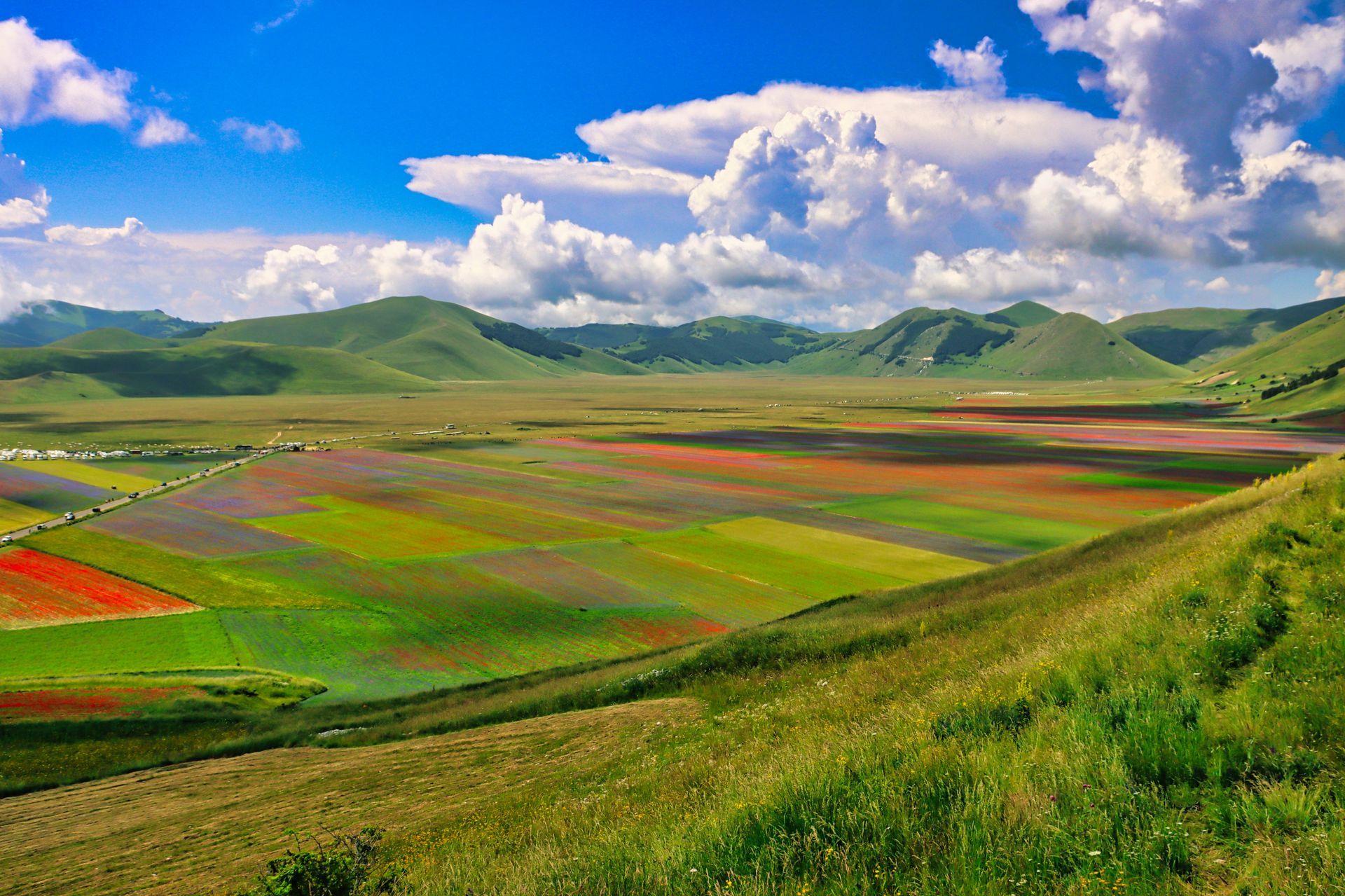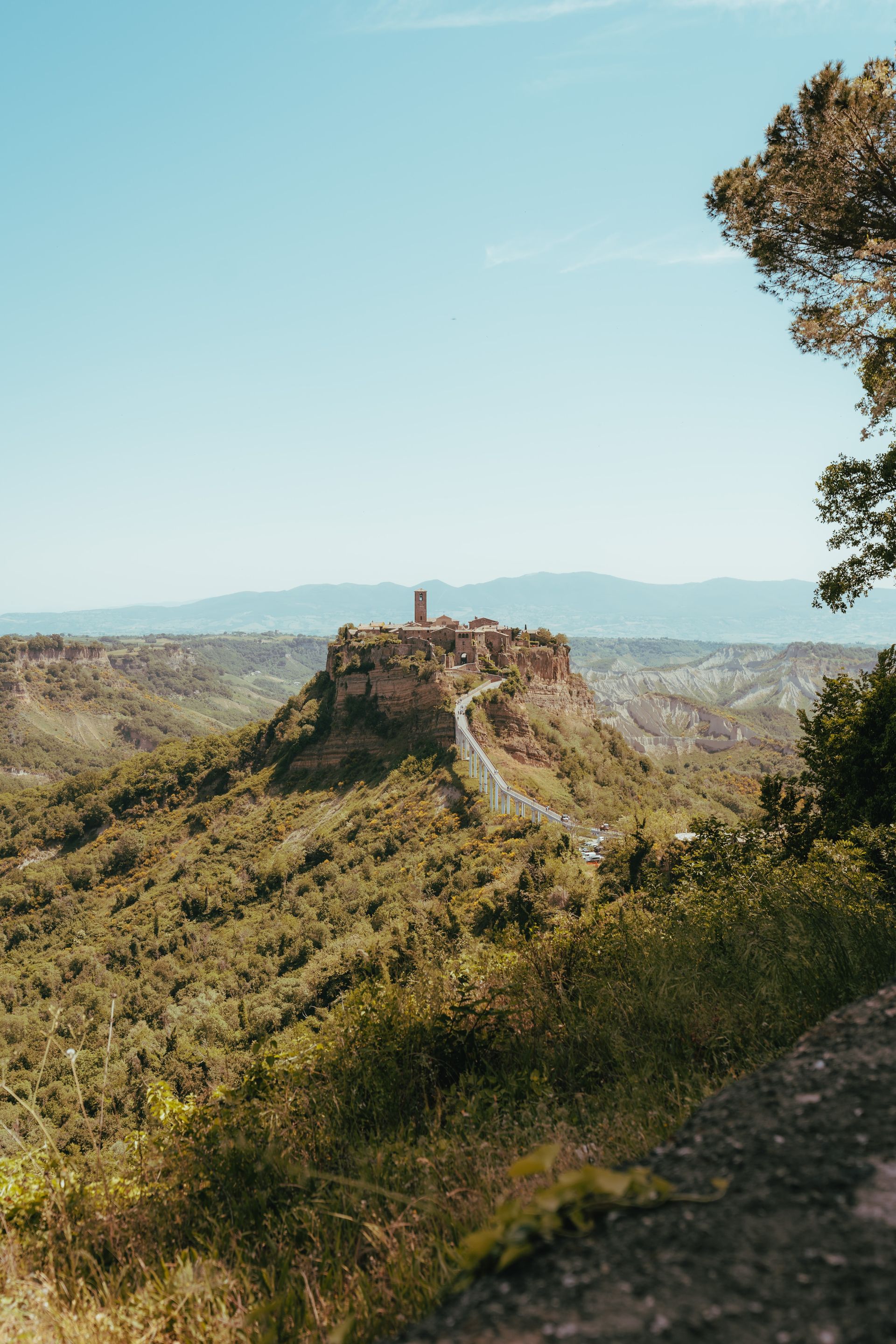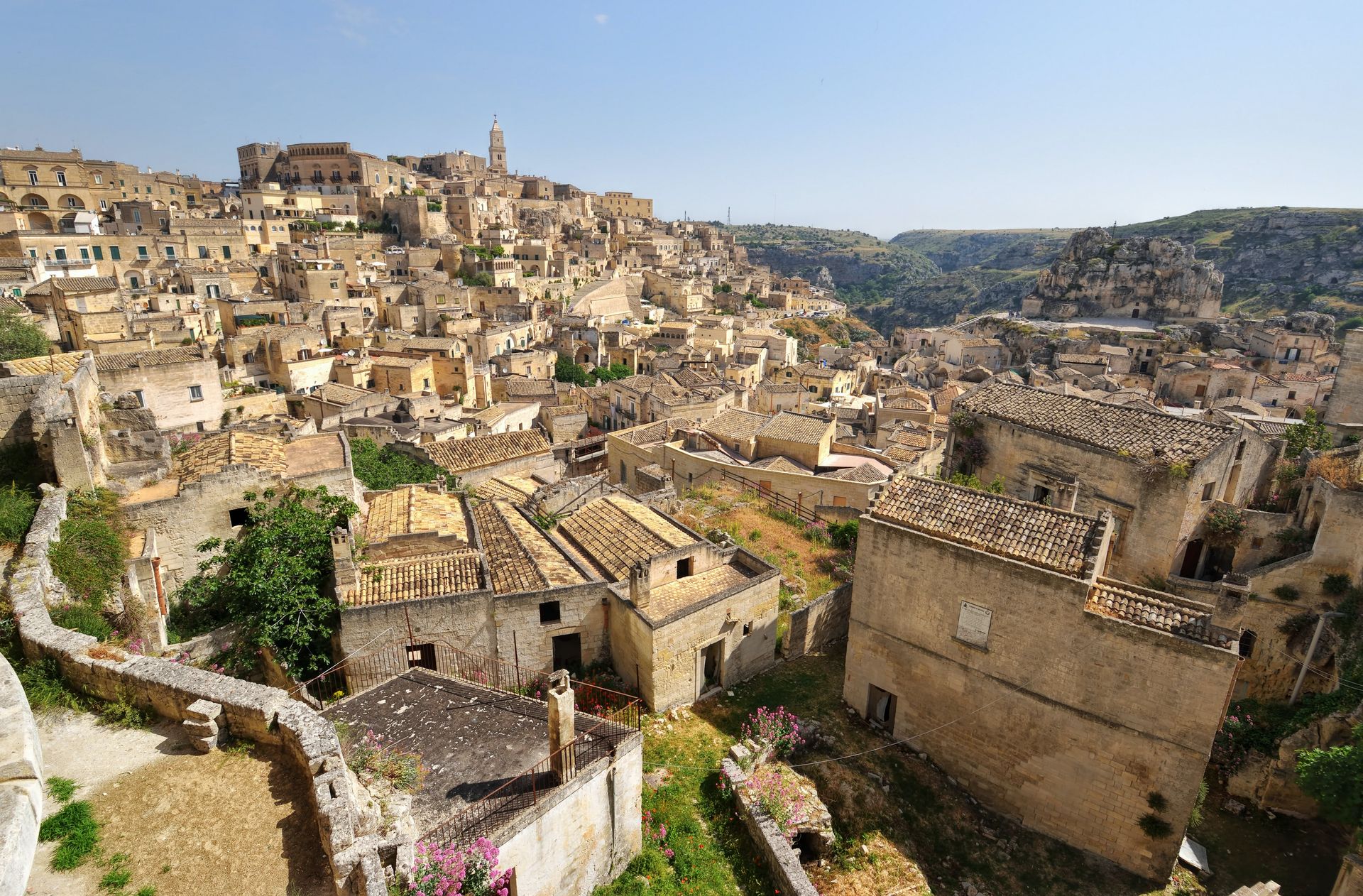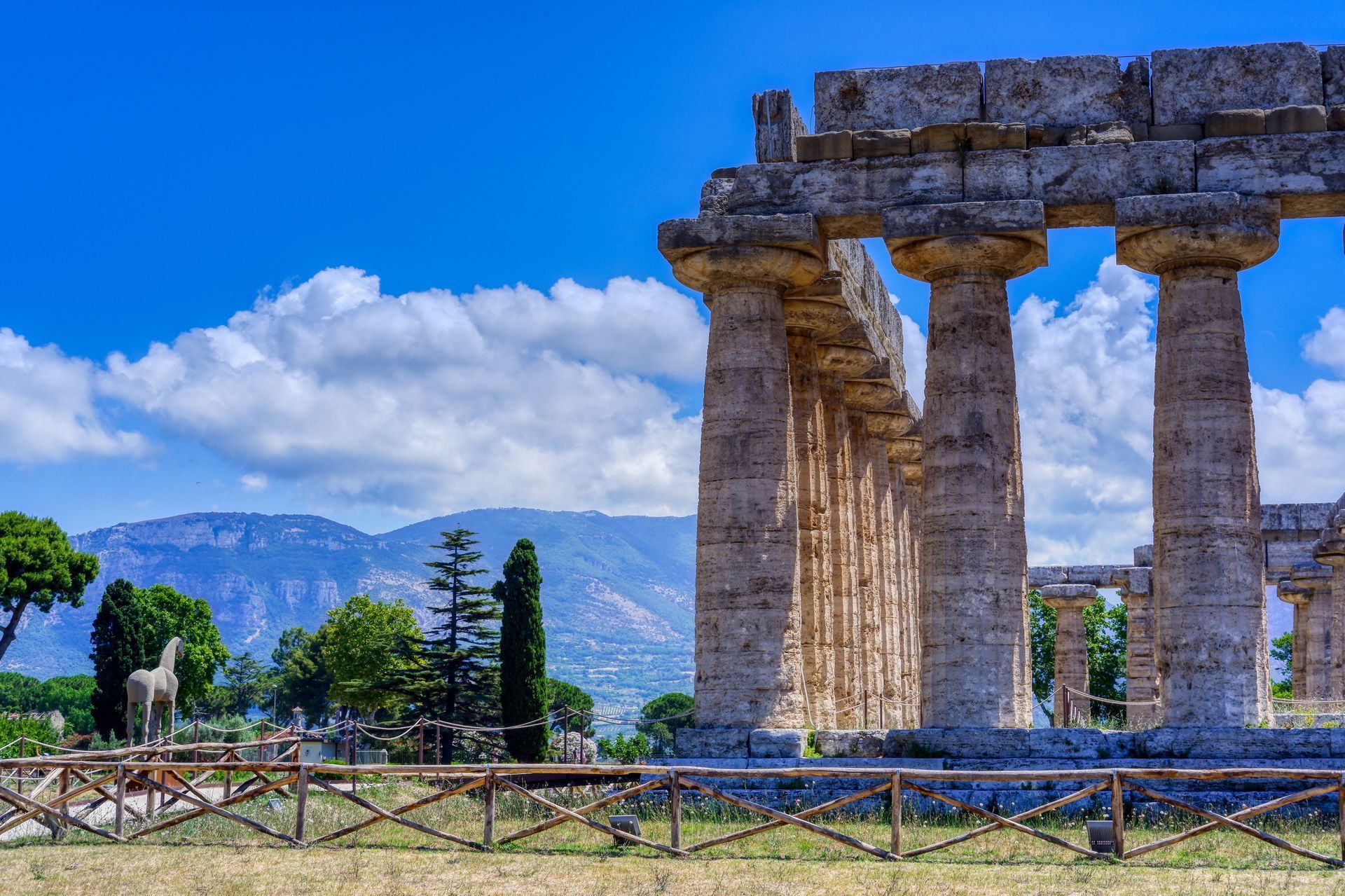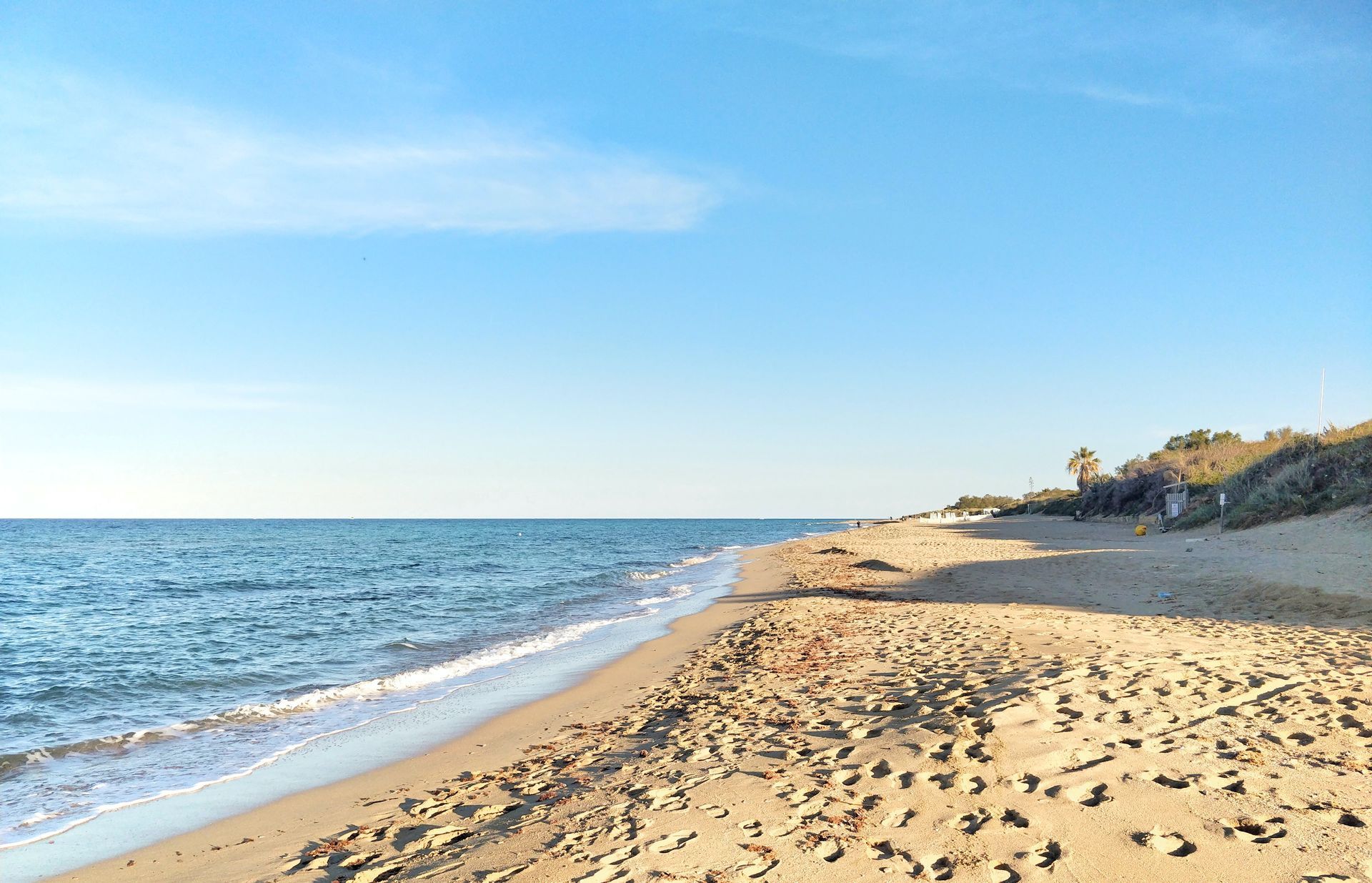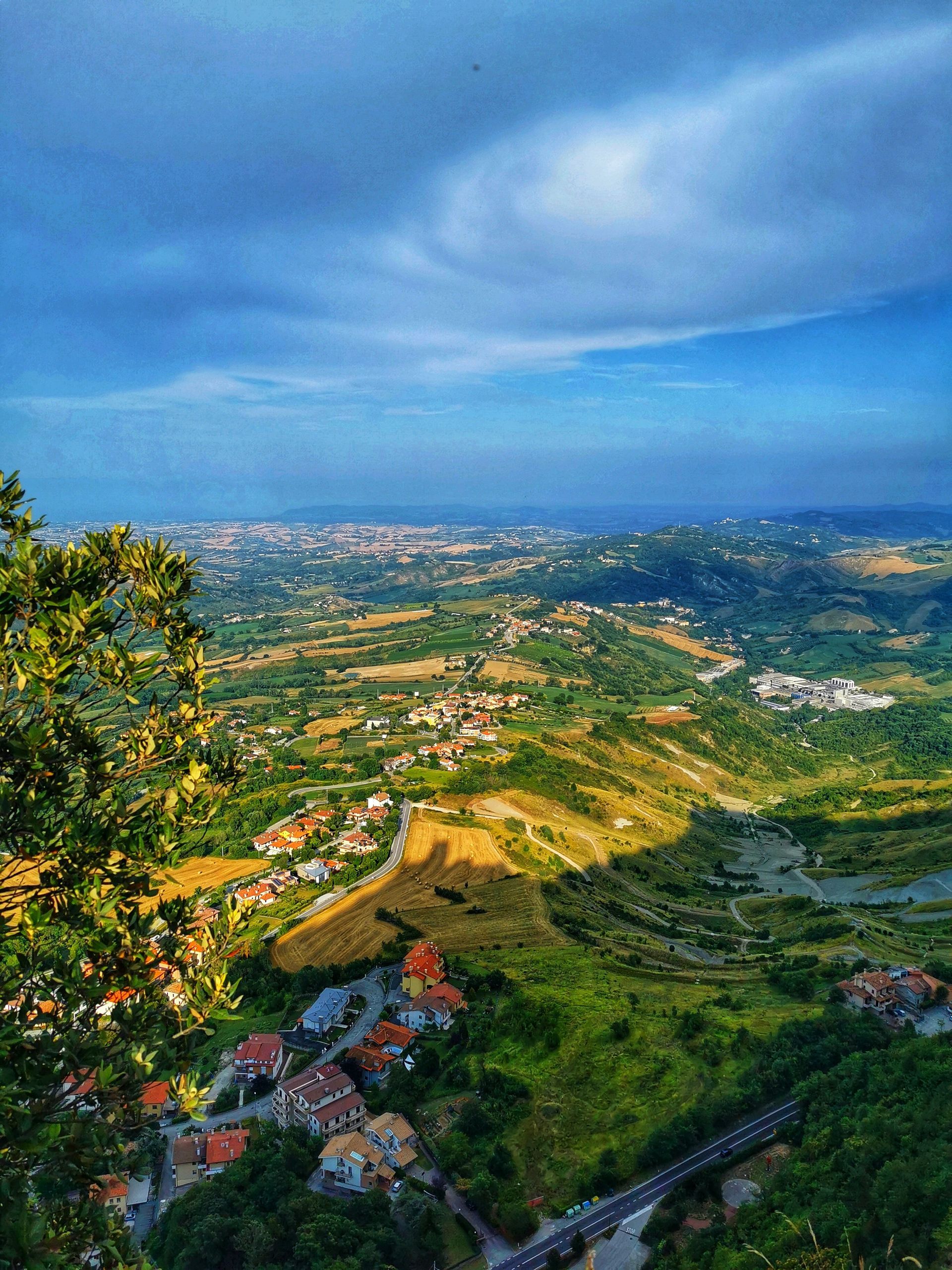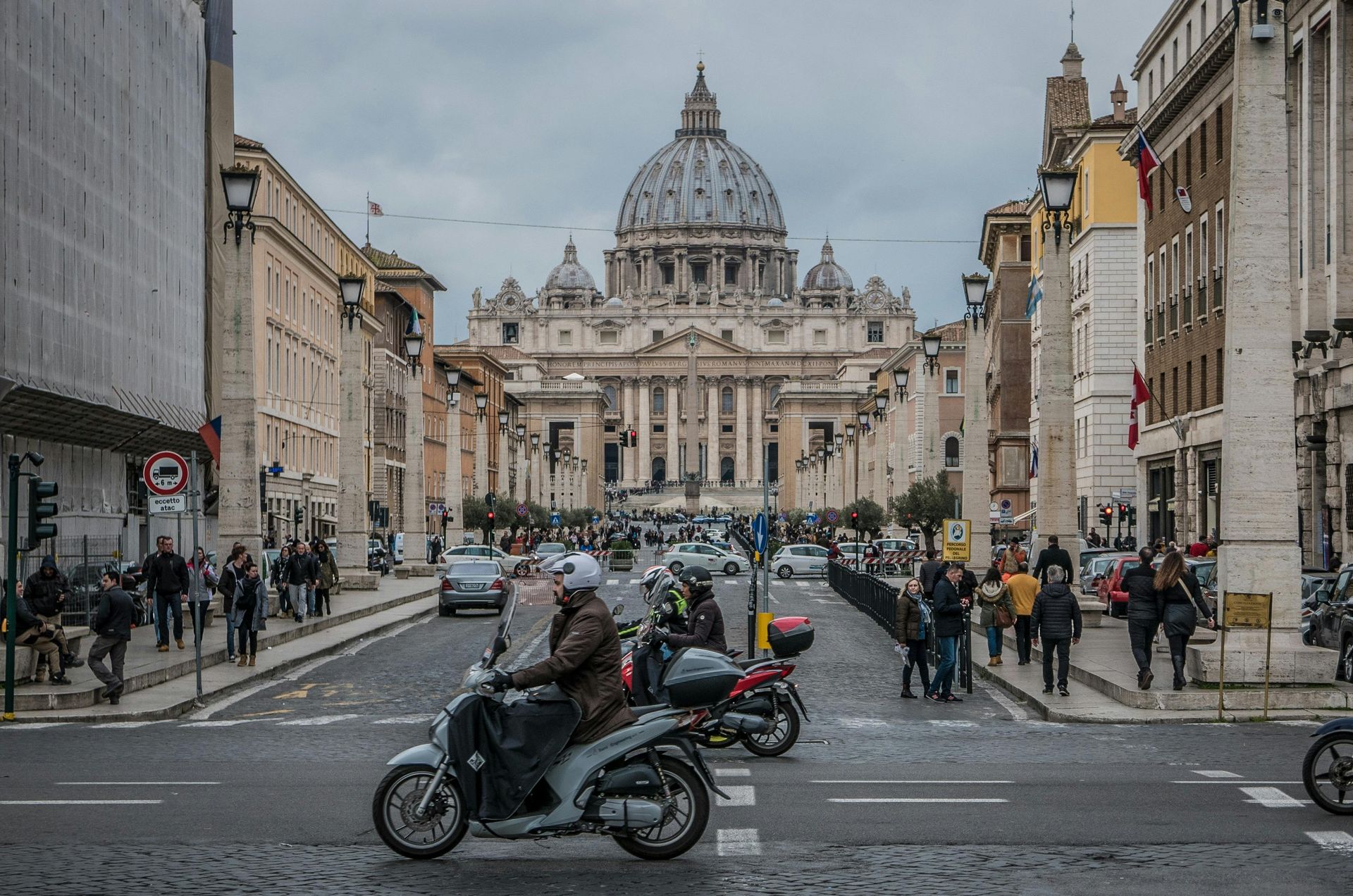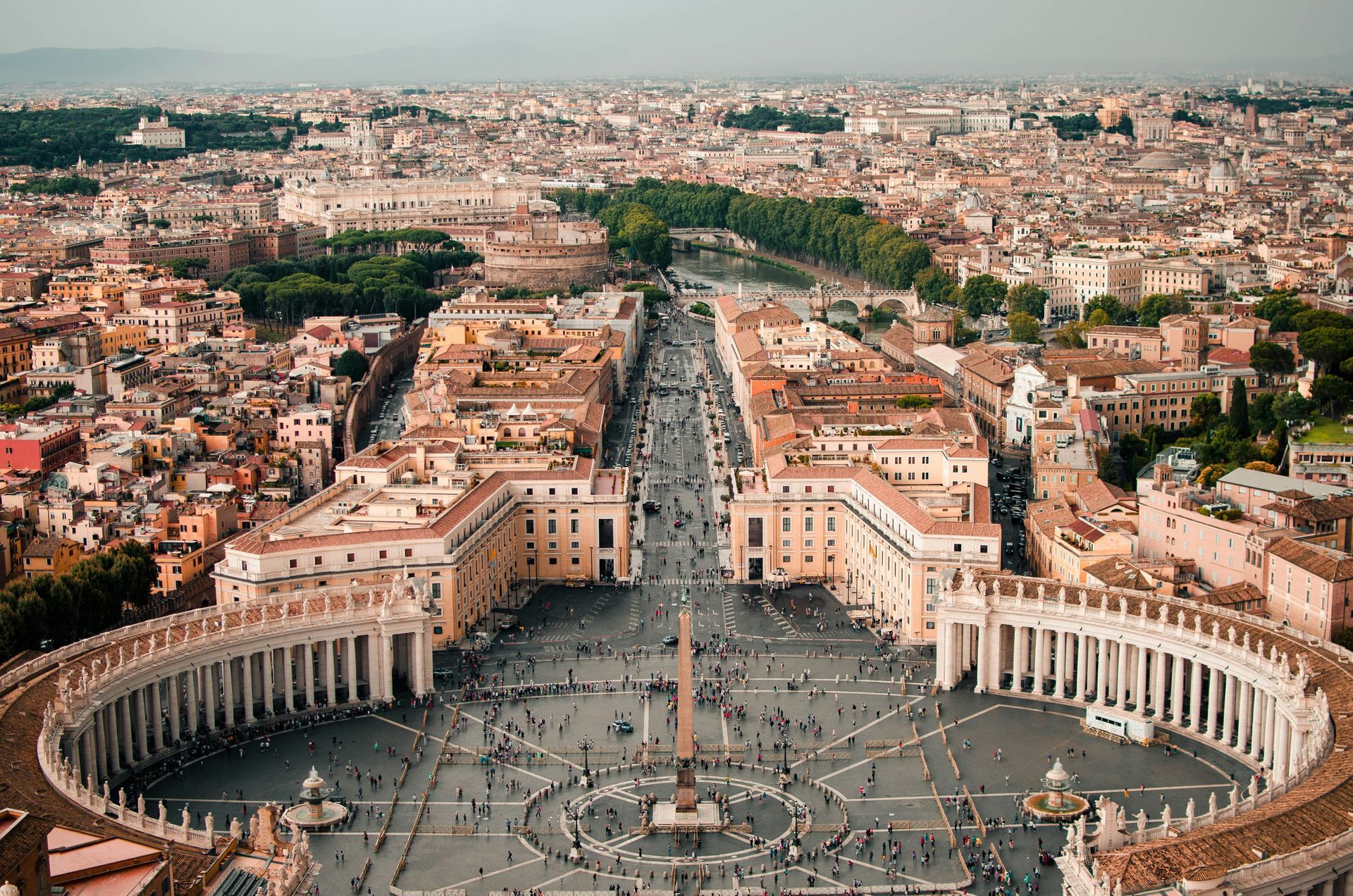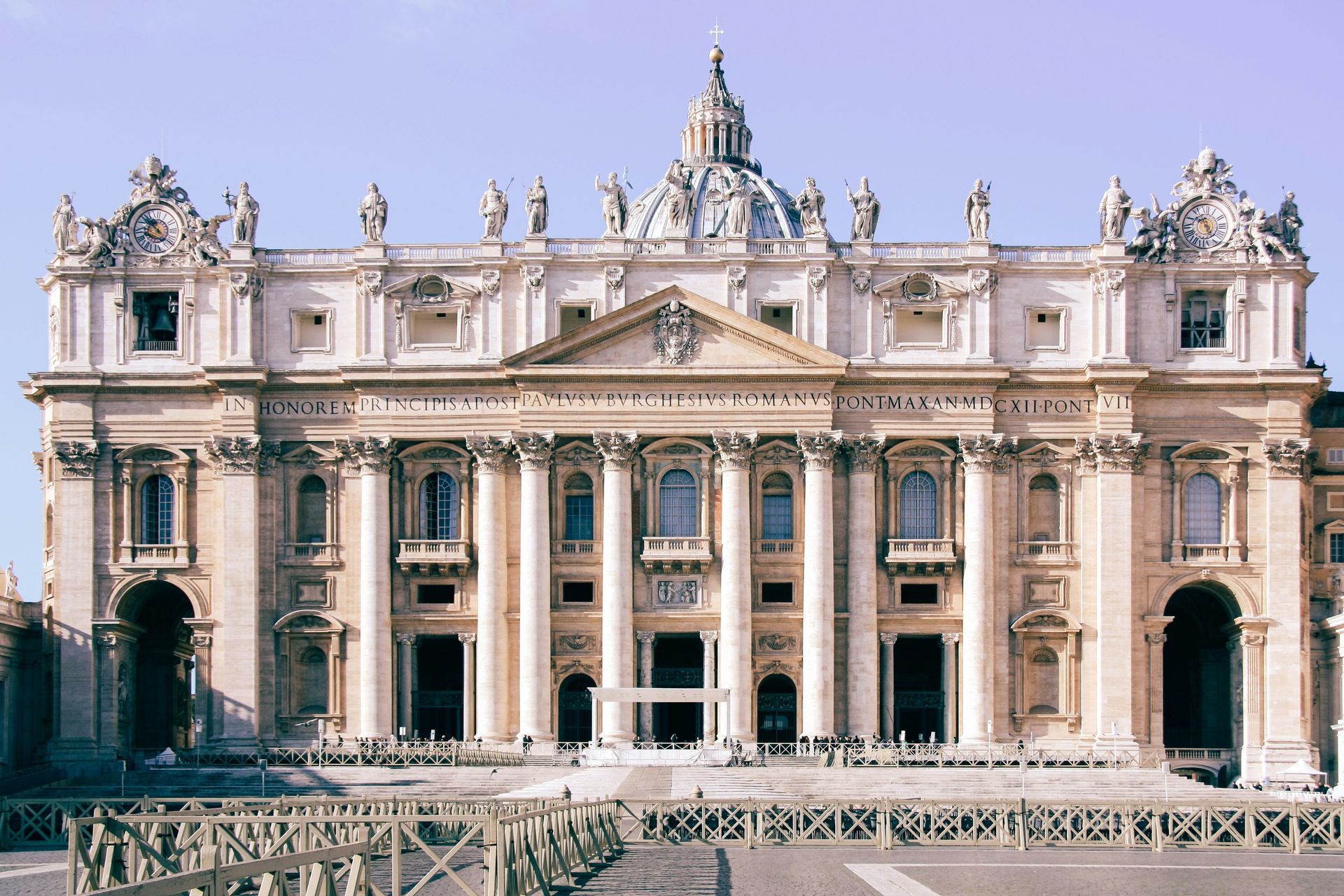Spreading Smile across the globe
Hidden Gems of Northern Italy
Hidden Gems of Italy are a testament to the country's diverse and enchanting beauty, often concealed from the traditional tourist routes. While Italy is celebrated for its iconic cities like Rome, Florence, Venice, and the Amalfi and Cinque Terre coasts, it's the lesser-known destinations that promise a unique journey. These unexplored regions offer travellers a chance to experience Italy's authentic culinary delights, rich historical narratives, and stunning natural landscapes. From the northern reaches to the southern shores, these Hidden Gems of Italy reveal a different facet of this remarkable nation.
Lake Orta - Piedmont
Hidden Gems of Italy come to life at Lake Orta, tucked away near the Swiss border in the heart of Piedmont. This hidden paradise often evades the spotlight compared to its more famous counterparts like Lake Como and Lake Garda. The historic town of Orta San Giulio, with its Baroque and Medieval architecture, cobbled streets, and idyllic Piazza Motta, enchants visitors. The glistening waters of the lake itself invite moments of serenity. What makes Lake Orta truly extraordinary is the mysterious island at its centre—a tranquil sanctuary inhabited by resident nuns.
Treviso - Veneto
Among the Hidden Gems of Italy, Treviso stands as a city in the Veneto region that retains its genuine northern Italian charm. Meandering through its narrow cobbled lanes, picturesque canals, and medieval city walls feels like a step back. Positioned on the fringes of the renowned Prosecco wine region, Treviso provides a delightful excuse for an aperitivo with a glass of Italy's renowned sparkling Prosecco.
Aosta Valley
Nestled among the bordering landscapes of Switzerland and France, the Aosta Valley showcases breathtaking alpine scenery, perched castles, and traditions that thrive throughout the year. When spring and summer arrive, the region's walking trails entice explorers. This season also brings lively festivals that celebrate folk traditions that date back to medieval times. Be sure to savour the local cheese Fontina, a culinary delight that embodies the spirit of this Hidden Gem of Italy.
Alba - Piedmont
Alba, a sought-after destination among Italy's hidden gems, is situated in the vineyards of the Langhe Hills. Once adorned with a hundred towers, Alba exudes a charming rural ambience. It's renowned for its autumn truffle festival, a gastronomic event that captures the essence of the region. Alba is also celebrated for its dark chocolate, hazelnut groves, white truffles, and prestigious wineries. It's from this very region that the sought-after Barolo wine originates.
Camogli - Liguria
Camogli, a typical and vibrant Italian seaside village on the Ligurian Riviera di Levante, perfectly embodies the spirit of the Hidden Gems of Italy. Towering, brightly painted houses dominate the town, and it has become a magnet for visitors seeking pristine beaches, Ligurian cuisine, the rustic fishing marina, Italian culture, and a tranquil natural setting. Camogli has earned its reputation for culinary excellence, focusing on fish and seafood, particularly anchovies and tuna, as well as the iconic pesto sauce made from basil and pine nuts.
Brescia - Lombardy
Hidden Gems of Italy often come alive through history, and Brescia is no exception. In this small city, history unfolds through a tapestry of architectural styles, spanning Roman, Medieval, Renaissance, Baroque, and even Art Deco. Walking through Brescia feels like a journey through time, and a visit to the captivating Piazza della Loggia, framed by a stunning Venetian-style palace at its heart, is a must for history enthusiasts.
Trieste
Trieste is a refreshingly unique destination, an Italian city positioned near the Slovenian border with its dialect that's a delightful blend of Austrian-German, Greek, Croatian, and Italian. Trieste's neoclassical waterfront is a sight to behold, with its marina brimming with stylish, glimmering yachts. The city's offerings include clear blue skies, expansive sandy beaches, city lidos, and the surrounding vineyards. Trieste is a Hidden Gem of Italy that belongs on every traveller's Northern Italian itinerary.
Modena - Emilia-Romagna
Modena is famed for its Hidden Gems of Italy, including balsamic vinegar, Luciano Pavarotti, the Romanesque cathedral, and the nearby Ferrari museum. Beyond these illustrious attractions, Modena reveals a treasure trove of remarkable restaurants. Massimo Bottura's Osteria Francescana has twice earned a place among the world's top 50 eateries, showcasing the culinary excellence of this Hidden Gem. While in Modena, don't miss the chance to savour local specialities like stuffed tortellini and sparkling Lambrusco wine, the perfect complement to your gastronomic journey.
Chiusa / Klausen - South Tyrol
Chiusa, also known as Klausen, is one of Italy's most picturesque villages. It is situated on the banks of the Isarco River in the South Tyrolean region near the Austrian border. Chestnut groves, green fields, vineyards, and farmsteads surround the town. In the village itself, visitors are captivated by narrow alleyways, coats of arms, large bay windows, crenellated facades, and the two main squares.
Ravenna - Emilia-Romagna
Ravenna offers a treasure trove of experiences among the Hidden Gems of Italy. This city is a feast for the senses, with its diverse offerings of food, music, art, culture, history, beaches, wine, and mosaics. Ravenna is home to eight UNESCO-listed sites, making it a must-visit for history and art enthusiasts. It's also known for its two-month-long music festival, Dante Alighieri's tomb, local culinary delights, nearby beach resorts, and the opportunity to explore pinewood forests. The city's fame is derived from its stunning mosaics, dating from the fifth and sixth centuries, scattered throughout the town.
In conclusion, Italy's Hidden Gems invite you to embark on a journey less travelled, where the rich tapestry of history, diverse cuisine, and breathtaking landscapes come to life. These lesser-known destinations provide an authentic Italian experience, away from the bustling crowds, revealing the nation's soul in its purest form. Explore these Hidden Gems to uncover Italy's hidden treasures.
Hidden Gems of Central Italy
Hidden Gems of Italy beckon the adventurous traveller to explore the lesser-known treasures that this remarkable country holds. From the picturesque valleys of Tuscany to the medieval charm of Umbria, the mysterious landscapes of Molise, and the architectural wonders of San Gimignano, these destinations promise unforgettable experiences.
Garfagnana - Tuscany
The Garfagnana region is a hidden gem in the beautiful Tuscan valley north of Lucca. It is crossed by the Serchio River, and the landscape is characterized by fertile greenery, rugged mountains, and charming villages. Outdoor activities such as hiking, walking, and mountain biking are enjoyed by many people in this area. Garfagnana is home to several one-of-a-kind attractions, including a ghost town, a wind cave, and the Devil's Bridge at Borgo a Mozzano.
Gubbio - Umbria
Umbria hides many treasures, and a particular favourite among Hidden Gems of Italy is the Medieval hilltop town of Gubbio. Gubbio, a city with a history dating back over 2,000 years, is a maze of cobbled streets and stone buildings that have been perfectly preserved. Visitors can take a cable car to the summit of Mount Ingino to enjoy panoramic views of the surrounding area. In addition, Gubbio hosts Italy's oldest event, the Corsa dei Ceri, in which teams race through the streets carrying massive wooden candles.
Molise
Molise is Italy's second-smallest region and one of its best-kept secrets. Hidden Gems of Italy are plentiful here. The picturesque town of Agnone is renowned for its artisanal bells, produced by the oldest family-run bell foundry in the world. Meanwhile, Campobasso, the regional capital, boasts a stunning medieval old town. Molise offers a captivating mix of historical charm and natural beauty, with rugged mountains, rolling hills, and pristine beaches along the Adriatic coast.
San Gimignano - Tuscany
Nestled in the heart of Tuscany, San Gimignano boasts medieval architecture and, of course, its famous towers. The town's historic centre is a UNESCO World Heritage site, known for its fourteen stone towers that once symbolised wealth and power. San Gimignano offers a glimpse into medieval Tuscany, with well-preserved streets and squares that transport visitors to another time. Besides the towers, make sure to explore the Collegiate Church and indulge in the local Vernaccia wine, a crisp white wine produced in the region.
Spello - Umbria
Another gem in the heart of Italy, Spello enchants visitors with its winding medieval streets and stunning floral displays. Known as the "Città Infiorata" or "flower town," Spello hosts the Infiorata festival, during which the streets are carpeted with intricate flower petal designs. This event occurs in early June and is a magnificent spectacle. Outside of the festival, Spello's charm continues with its well-preserved historic centre and beautiful churches.
Trulli of Alberobello - Apulia
Apulia, or Puglia, is famous for its unique trulli houses, and Alberobello is the epicentre of this architectural marvel. These whitewashed conical homes are a UNESCO World Heritage Site that offers a glimpse into the region's history. Visitors can even stay in trulli that have been converted into accommodations, providing a truly immersive experience.
Norcia - Umbria
Nestled in the Sibillini Mountains, Norcia is renowned for its gastronomy. This charming town produces exceptional cured meats, particularly prosciutto and salami. For food enthusiasts, Norcia is a true Hidden Gem of Italy. Explore local shops, taste the region's specialities, and visit the beautiful town square. Nature enthusiasts will also find hiking trails and natural beauty in the nearby Monti Sibillini National Park.
Montefalco - Umbria
Montefalco is often called the "Balcony of Umbria" for its stunning views over the surrounding valley. This charming town is also known for its wine, particularly Sagrantino, one of Italy's most robust red wines. Montefalco's medieval centre is picturesque and hosts several churches with remarkable frescoes, making it a cultural and gastronomic gem.
Castelluccio di Norcia - Umbria
High in the Sibillini Mountains, Castelluccio di Norcia is a quaint village known for its stunning wildflower blooms in late spring and early summer. The surrounding plateau becomes a colourful tapestry, attracting photographers and nature enthusiasts. Besides the flowers, visitors can enjoy hiking and take in the breathtaking scenery. Hidden Gems of Italy like Castelluccio di Norcia provide a unique connection to nature and the changing seasons.
In the heart of Italy, a treasury of Hidden Gems awaits the intrepid traveller. From the mysterious ghost town of Garfagnana to the ancient charms of Gubbio, the enchanting landscapes of Molise, and the medieval splendours of San Gimignano, these lesser-known destinations reveal Italy's diverse beauty and rich history. Journey through the tranquil streets of Spello, marvel at the unique trulli houses in Alberobello, savour the culinary delights of Norcia, and bask in the vibrant blooms of Castelluccio di Norcia. These Hidden Gems of Italy promise an unforgettable adventure in a land of timeless wonder.
Hidden Gems of Southern Italy
Italy, a land of rich history, captivating art, and exquisite cuisine, is known for its iconic cities and world-famous landmarks. Despite the tourist-filled streets and crowded piazzas, the country holds many hidden gems—lesser-known destinations that offer a more intimate and authentic experience. These places, tucked away in various corners of Italy, are a testament to the nation's diverse and enchanting beauty, waiting to be explored by the discerning traveller. From medieval towns perched atop hills to charming coastal villages and ancient archaeological sites, the Hidden Gems of Italy promise unique adventures and unforgettable memories.
Civita di Bagnoregio - Lazio
Civita di Bagnoregio is often called the "Dying Town" because of its gradual erosion over the centuries. This medieval village is perched on a hilltop and can only be reached by a long footbridge. It's a unique destination, seemingly suspended in time, and is the perfect Hidden Gem for history buffs and photographers.
Matera - Basilicata
Matera, known for its cave dwellings, is one of Italy's most intriguing and unique destinations. The Sassi di Matera, a historic cave settlement, is a UNESCO World Heritage Site. Matera is gaining popularity but still qualifies as one of the Hidden Gems of Italy. Touring this labyrinth of stone-carved rooms and narrow streets offers an incredible historical journey.
Sperlonga - Lazio
Sperlonga is a charming coastal town characterized by its pristine beaches, winding alleys, and picturesque piazzas. Nestled between Rome and Naples, Sperlonga is often overlooked by travellers. A visit here reveals a relaxed and authentic Italian atmosphere, perfect for strolls and seaside relaxation. Take advantage of the Grotto of Tiberius, a cave once used as the emperor's villa and now a museum.
Paestum - Campania
The ancient ruins of Paestum, originally a Greek colony known as Poseidonia, provide an extraordinary window into Italy's history. The temples are exceptionally well-preserved, ranking among the best-preserved in the world. Paestum is also home to a fascinating archaeological museum that displays artefacts from the site. Enjoy a step back in time amid the Hidden Gems of Italy.
Castro - Apulia
Castro, a picturesque coastal town, boasts a historic centre perched on a rocky outcrop. Visitors can explore ancient churches, fortifications, and a charming harbour. Castro also has sea caves that can be explored by boat. The region's cuisine is a seafood lover's paradise, making this town a Hidden Gem for food enthusiasts as well.
Scilla - Calabria
Scilla, an idyllic coastal village in Calabria, offers stunning sea views and hidden beaches. The town is known for the Ruffo Castle, which dominates the landscape, and the legendary sea monster Scylla from Greek mythology. The charming village is a serene and lesser-known alternative to some of the more crowded Italian seaside destinations.
San Marino
San Marino is a microstate surrounded by Italy and is one of the world's oldest republics. It's a destination that's often missed, making it a true Hidden Gem. San Marino boasts dramatic mountaintop views, historic architecture, and unique attractions like the Guaita Tower and the Palazzo Pubblico. For collectors, the country is also known for its beautiful stamps and coins.
Conclusion
Discovering the Allure of Hidden Gems of Italy
Hidden Gems of Italy offers travellers an authentic experience, far removed from the tourist-packed cities and famous landmarks. These lesser-known destinations unravel the genuine charm, culture, history, and culinary wonders that make Italy an endlessly fascinating country to explore. From the mountains of the North to the coasts of the South, each region holds its treasures, waiting to be discovered by those who venture off the beaten path. By exploring the Hidden Gems of Italy, you can craft a unique and unforgettable journey that deepens your appreciation of this incredible country. Plan your trip carefully, and you will be rewarded with the beauty, history, and flavours that characterize these enchanting places.
How to get to Sistine Chapel from
St Peter Basilica
Embarking on a journey through the Vatican Museums and St. Peter's Basilica is a profound exploration of art, history, and spirituality. As visitors traverse the hallowed halls and marvel at exquisite masterpieces, a common question arises: "How to get to the Sistine Chapel from St. Peter's Basilica?" This query opens the door to a narrative that intertwines two iconic landmarks, guiding travelers through a cultural odyssey.
Navigating the path from the grandeur of St. Peter's Basilica to the magnificence of the Sistine Chapel involves a strategic understanding of the Vatican's layout and the seamless transitions that connect these architectural marvels. By unraveling this enigma, pilgrims and art enthusiasts can optimize their Vatican experience, ensuring a seamless transition from the awe-inspiring grandeur of St. Peter's Basilica to the celestial splendor encapsulated within the renowned Sistine Chapel. Join us on a virtual pilgrimage as we uncover the secrets of this sacred journey, offering insights into the logistical maze that links these two gems of Vatican City.
How to get to Sistine Chapel from St Peter Basilica
Embarking on the journey from the majestic St. Peter's Basilica to the iconic Sistine Chapel involves navigating the Vatican's intricate layout. The transition between these two cultural gems can be seamlessly accomplished through various modes of transportation, catering to the preferences and constraints of every traveller. Here the answer to “How to get to Sistine Chapel from St Peter Basilica”:
By car:
How to get to Sistine Chapel from St Peter Basilica? For those opting for the convenience and flexibility of private transport, reaching the Sistine Chapel from St. Peter's Basilica by car is a viable option. Navigating the short distance between these landmarks allows visitors to enjoy a comfortable and direct route, ensuring a swift and convenient arrival at the Sistine Chapel's doorstep.
By walk:
How to get to Sistine Chapel from St Peter Basilica? On the other hand, travelers seeking a leisurely and immersive experience may choose to explore the route by walking. The journey unfolds as a picturesque stroll through the Vatican City's enchanting surroundings, providing an opportunity to absorb the architectural splendor and historical richness that characterize this sacred enclave.
Note: Opting to traverse the distance from St. Peter's Basilica to the Sistine Chapel on foot is a highly recommended choice for visitors eager to embrace the enchanting ambiance of Vatican City. This leisurely stroll not only provides a direct and picturesque route but also allows you to absorb the architectural grandeur and historical significance that defines this sacred enclave.
By transport:
How to get to Sistine Chapel from St Peter Basilica? Public transportation enthusiasts can rely on the efficient bus system to traverse the distance between St. Peter's Basilica and the Sistine Chapel. The well-connected network of buses offers a cost-effective and environmentally friendly alternative, allowing visitors to witness the cityscape and daily life while en route to their cultural destination.
Whether by car, on foot, or via bus, the journey from St. Peter's Basilica to the Sistine Chapel promises to be a captivating adventure, punctuated by the allure of Vatican City. Each mode of transportation contributes to a unique perspective, enriching the overall experience of transitioning between these renowned landmarks.
So, How to get to Sistine Chapel from St Peter Basilica? As you embark on this voyage through Vatican City, consider the time, convenience, and immersive quality of your chosen transportation method. The journey itself becomes an integral part of the exploration, offering glimpses into the beauty and significance of this extraordinary pilgrimage within the heart of Rome. Whether you opt for the efficiency of a car, the serenity of a walk, or the communal charm of a bus ride, each choice is a step closer to unraveling the cultural tapestry woven between St. Peter's Basilica and the Sistine Chapel.
What exactly is Vatican City, and where can it be found?
Welcome to the epicenter of Catholicism, the smallest independent state in the world, and a treasure trove of art and history – the Vatican City. Situated in the midst of Rome, this independent city-state is a symbol of centuries of religious and cultural importance. In this comprehensive exploration, we embark on a journey to unravel the mysteries of the Vatican City, delving into its rich heritage and uncovering the wonders that await eager travelers.
The State of the Vatican City, officially referred to as the Vatican City, is a sovereign city-state enclosed within Rome, Italy. Spanning a mere 44 hectares (110 acres), it may be small in size, but its influence on global religious and artistic landscapes is immeasurable. As the spiritual and administrative center of the Roman Catholic Church, the Vatican City attracts millions on pilgrimage and stands as a cultural heritage beacon for enthusiasts across the globe.
Our quest begins by understanding the unique positioning of the Vatican City within Rome. Situated on the west bank of the Tiber River, this sovereign state is easily accessible, making it a must-visit destination for those exploring the Eternal City. As we unravel the layers of its geography, we'll answer the pressing question: How to get to Sistine Chapel from St Peter Basilica, two of the most iconic sites within the Vatican?
The journey between St. Peter's Basilica and the Sistine Chapel is not just a physical transition; it's a passage through time, art, and spirituality. The Sistine Chapel, renowned for Michelangelo's masterpieces adorning its ceiling, stands at the heart of the Vatican Museums, while St. Peter's Basilica, a marvel of Renaissance architecture, is a pilgrimage site and one of the world's largest churches.
To comprehend the seamless connection between these landmarks, we'll explore various modes of transportation, including walking, taking a bus, or opting for a car. Each option provides a distinct perspective, giving travelers the freedom to select an experience that resonates with their preferences and pace.
Throughout this journey, we will not only address practical considerations but also explore the historical and cultural significance embedded in these sites. The Vatican City is a living testament to the intersection of faith and art, and our exploration aims to capture the essence of this extraordinary enclave.
Whether you're an experienced globetrotter or embarking on your inaugural visit, come along on this enthralling journey through the Vatican City. Together, we'll navigate its cobblestone streets, uncover hidden gems, and witness the harmonious coexistence of religious devotion and artistic brilliance. Get ready to embark on a quest that transcends boundaries and immerses you in the soul-stirring aura of the Vatican City.
What is St Peter Basilica?
Nestled within the embrace of the Vatican City, St. Peter's Basilica stands as a towering testament to centuries of religious devotion, architectural prowess, and artistic brilliance. This iconic basilica, one of the holiest sites in Christianity, beckons pilgrims, tourists, and art enthusiasts alike. In this immersive journey, we delve into the grandeur and significance of St. Peter's Basilica, unravelling its rich history and contemplating the best route to reach the awe-inspiring Sistine Chapel from this monumental edifice.
St. Peter's Basilica, named after the apostle Peter, whose tomb is believed to lie beneath the basilica, is a Renaissance masterpiece that has left an indelible mark on the global cultural landscape. Designed by architectural luminaries such as Donato Bramante, Michelangelo, Carlo Maderno, and Gian Lorenzo Bernini, the basilica is a harmonious blend of artistic styles, each contributing to its magnificence.
As you approach St. Peter's Square, the colossal colonnade, designed by Gian Lorenzo Bernini, embraces you, creating a sense of anticipation for the grandeur that lies beyond. The basilica's dome, an architectural marvel designed by Michelangelo, dominates the skyline, drawing visitors into its sacred realm.
Upon entering, one is greeted by the vastness of the nave, adorned with ornate sculptures, intricate mosaics, and awe-inspiring artworks. The central nave leads to the main altar, where Bernini's monumental baldachin, a canopy soaring over the papal altar, commands attention. The basilica's architectural elements and artistic embellishments coalesce, creating an atmosphere of reverence and splendour.
Apart from its architectural and artistic eminence, St. Peter's Basilica carries profound religious significance. People from across the globe assemble to participate in liturgical ceremonies and witness papal blessings. The basilica's stature as a pilgrimage destination is accentuated by its association with St. Peter, recognized as the inaugural pope, and the Vatican's position as the focal point of the Catholic Church.
Now, let's embark on the journey from St. Peter's Basilica to the renowned Sistine Chapel. This path not only involves a physical transition but also a symbolic one, as you traverse from the grandeur of the basilica to the artistic splendors of the Vatican Museums. A seamless exploration between these landmarks is essential to fully grasp the interconnected narrative of art and faith within the Vatican City.
For those contemplating the best route, walking emerges as a compelling option. The short distance between St. Peter's Basilica and the Vatican Museums allows visitors to soak in the atmosphere, traversing through the enchanting Vatican City. The journey unfolds like a pilgrimage, leading you from the spiritual grandeur of the basilica to the artistic masterpiece housed within the Sistine Chapel.
Alternatively, visitors may opt for a bus, providing a convenient and time-efficient mode of transportation. The well-connected transport system in the Vatican City facilitates a smooth transition, allowing you to conserve energy for the visual feast awaiting at the Sistine Chapel.
In conclusion, St. Peter's Basilica transcends its role as a religious monument; it is a testament to human creativity and devotion. Whether you approach it from a spiritual or artistic perspective, the basilica's magnificence is undeniable. As you contemplate the best route to the Sistine Chapel from St. Peter's Basilica, consider the seamless connection between these landmarks — a journey that encapsulates the essence of the Vatican City's cultural and spiritual tapestry. Don’t forget to discover How to get to Sistine Chapel from St Peter Basilica!
Conclusion:
In conclusion, navigating the journey from St. Peter's Basilica to the Sistine Chapel unveils a transformative experience within the heart of the Vatican City. As visitors traverse the sacred halls of St. Peter's Basilica, absorbing its profound religious and artistic significance, the prospect of reaching the Sistine Chapel becomes a seamless continuation of this spiritual pilgrimage.
Whether one opts for a leisurely walk, embracing the atmosphere of the Vatican City's enchanting streets, or chooses the efficiency of a bus ride, the transition between these monumental sites is a testament to the interconnectedness of faith and art. The keyword "How to get to Sistine Chapel from St. Peter's Basilica" encapsulates the practical considerations for this pilgrimage, offering insights into the routes that seamlessly connect these cultural and spiritual landmarks.
As you stand beneath the frescoed ceiling of the Sistine Chapel, the echoes of your journey from the grandeur of St. Peter's Basilica linger, enhancing the appreciation of Michelangelo's masterpieces. This exploration serves as a guide for those seeking not just a physical journey but a holistic encounter with the profound cultural and religious heritage embedded in the Vatican City. May this expedition from basilica to chapel leave an indelible mark, fostering a deeper understanding of the artistic and spiritual treasures within this sacred enclave. Don’t forget to discover How to get to Sistine Chapel from St Peter Basilica!
Things To Do | Travel Information | Local's Favourites




